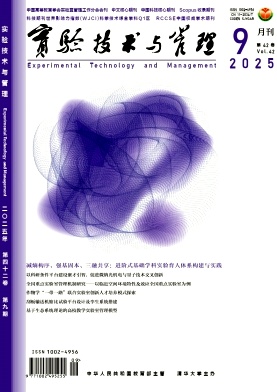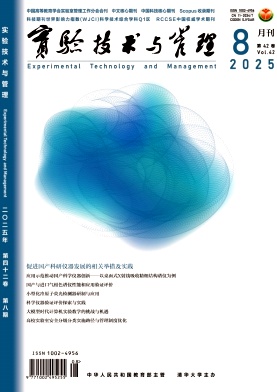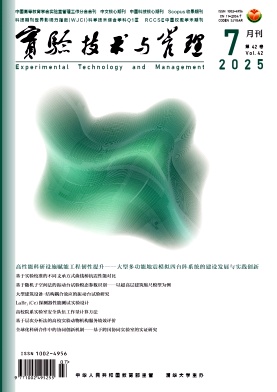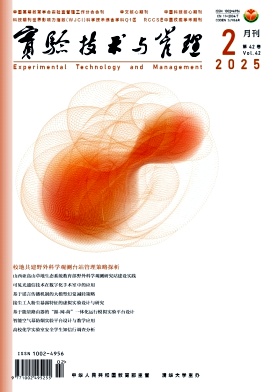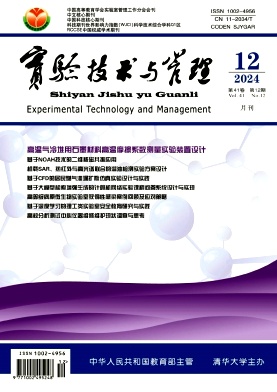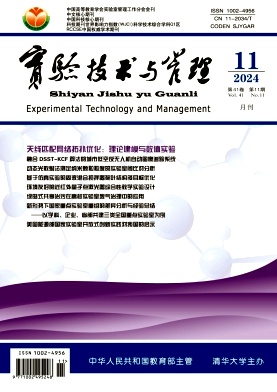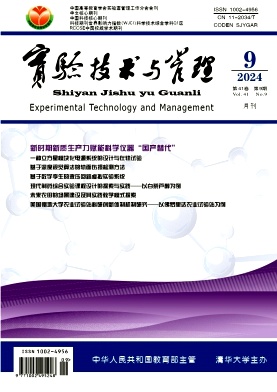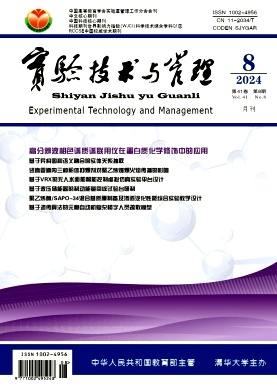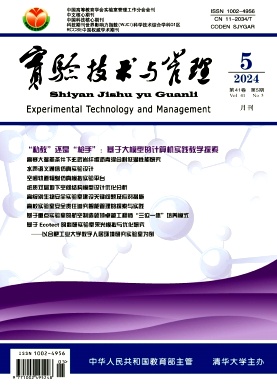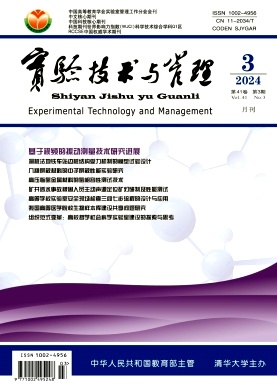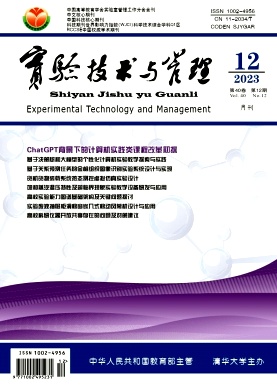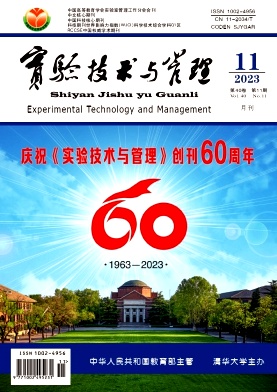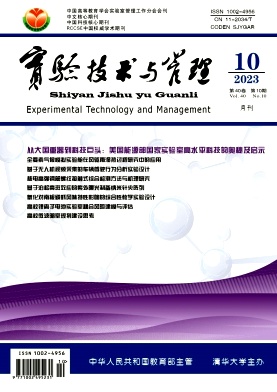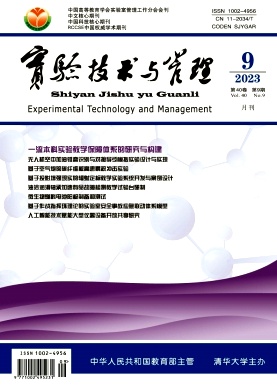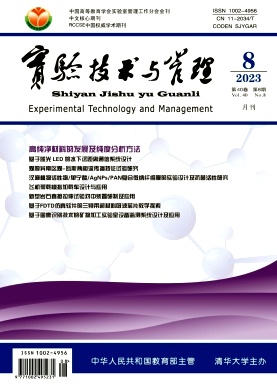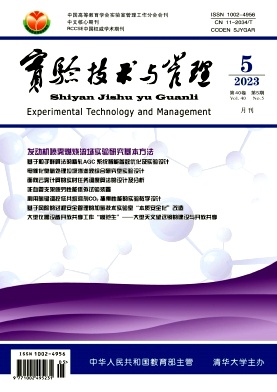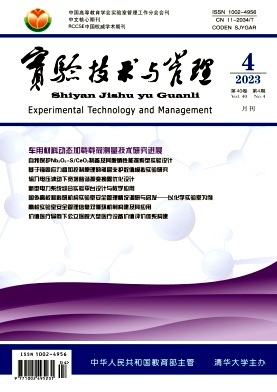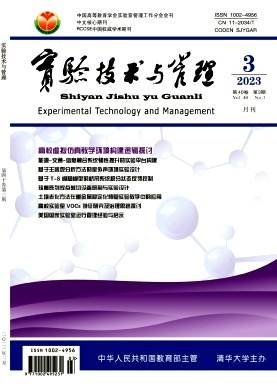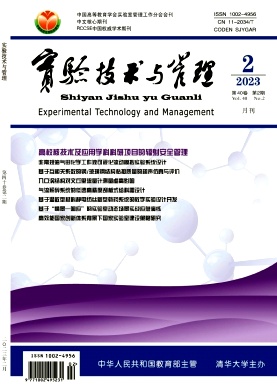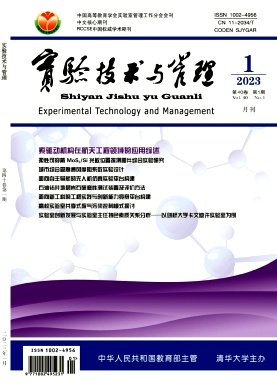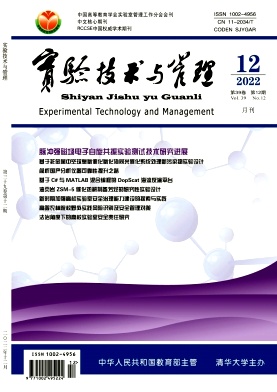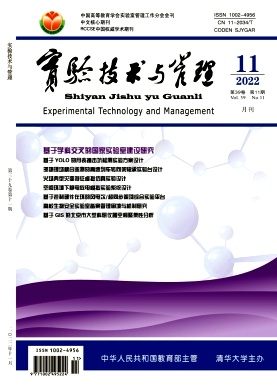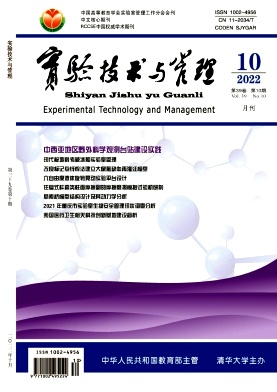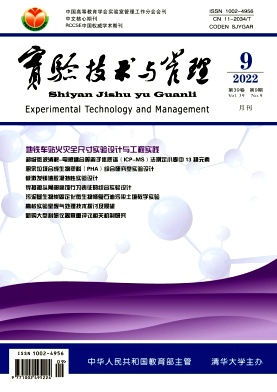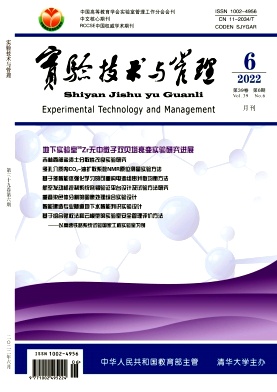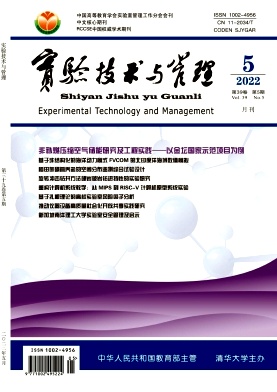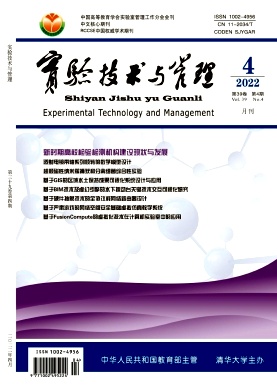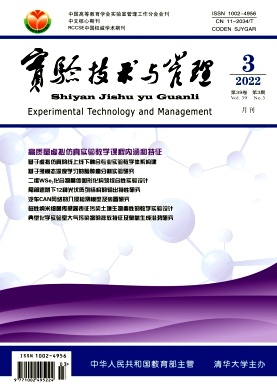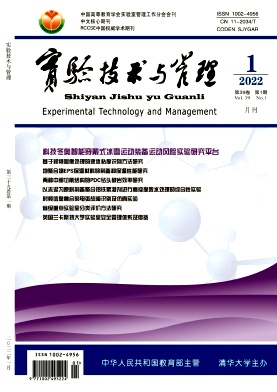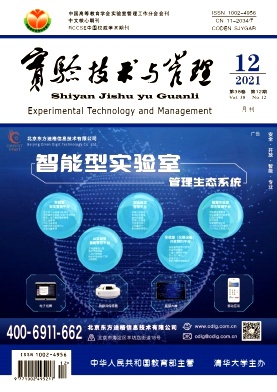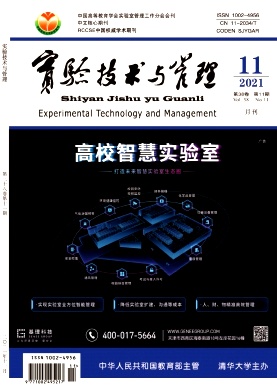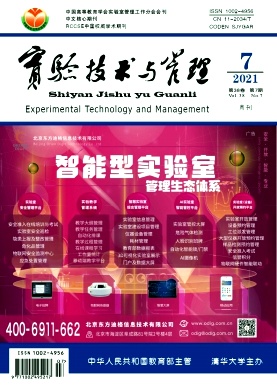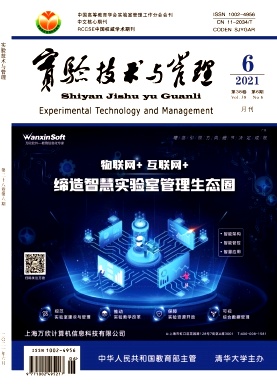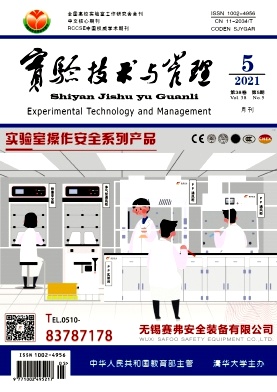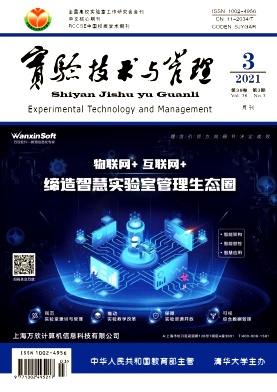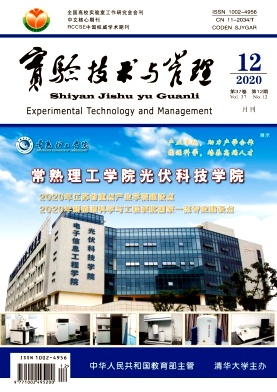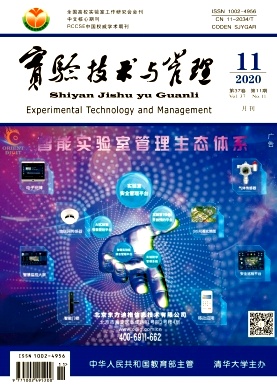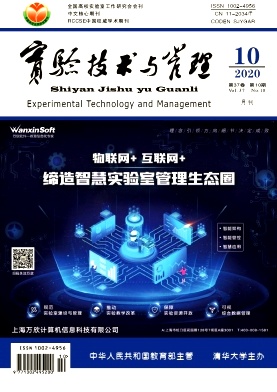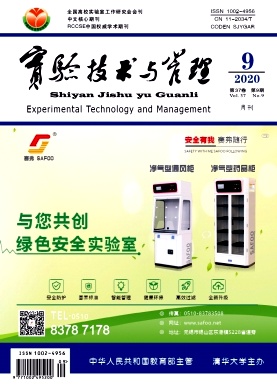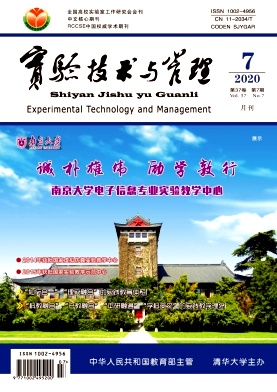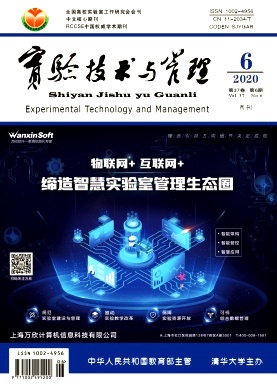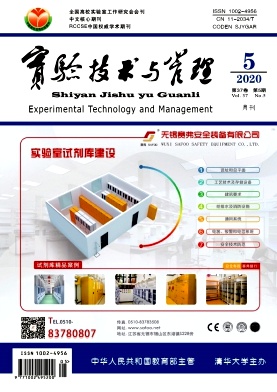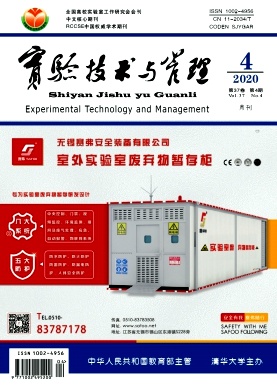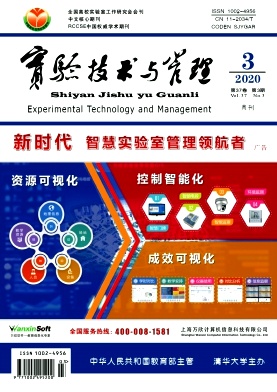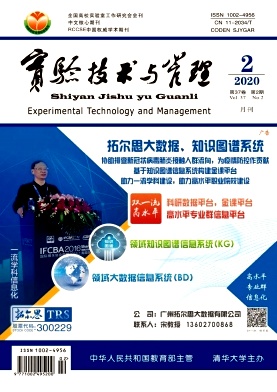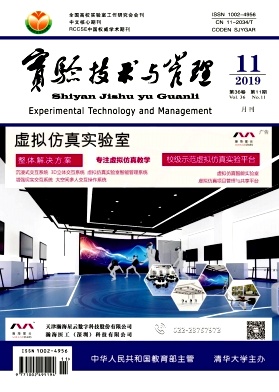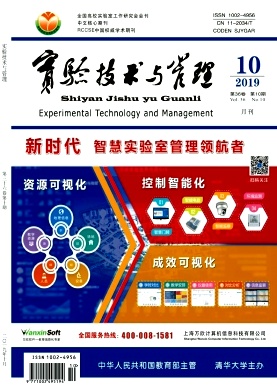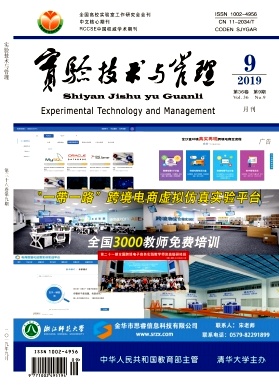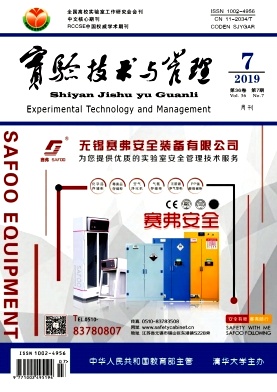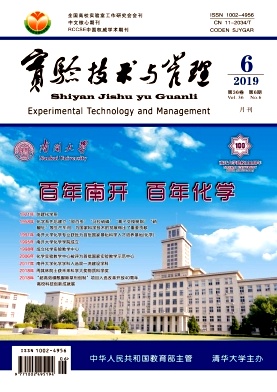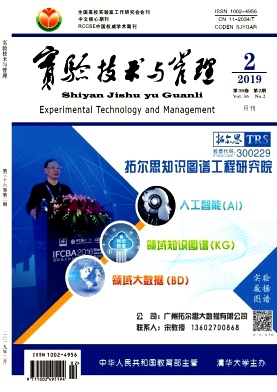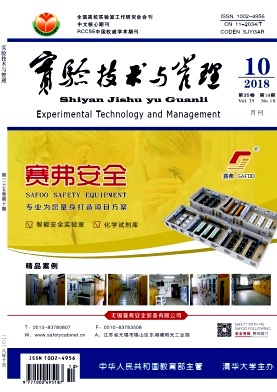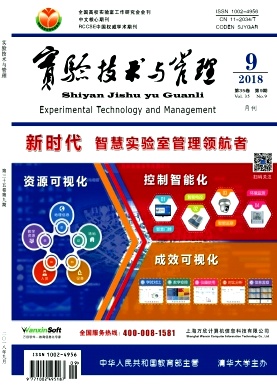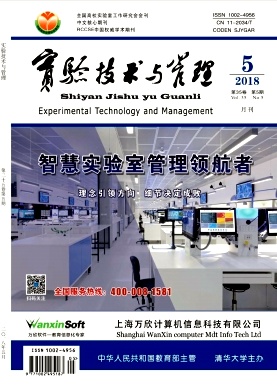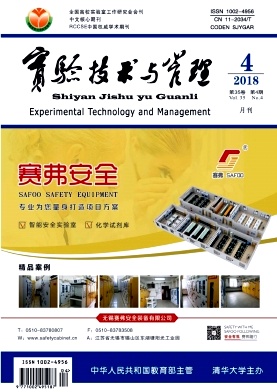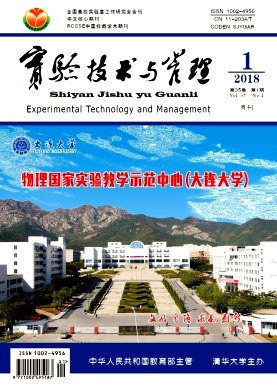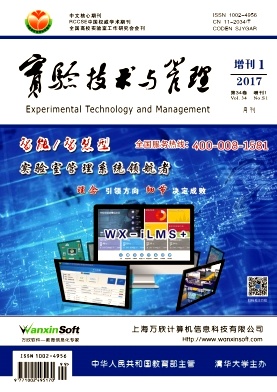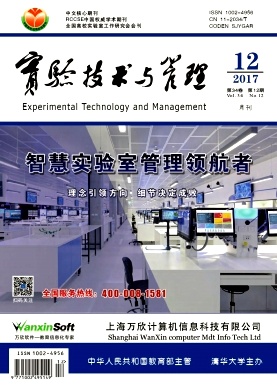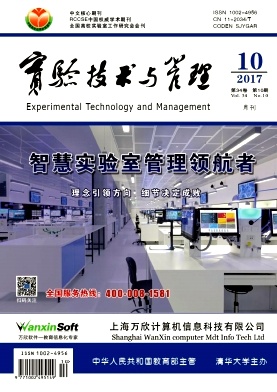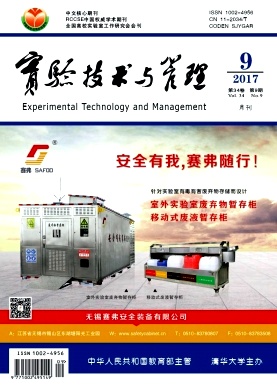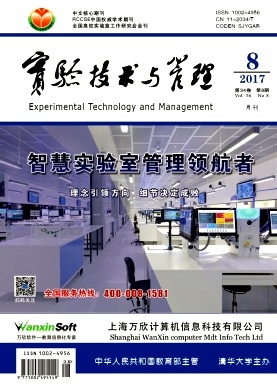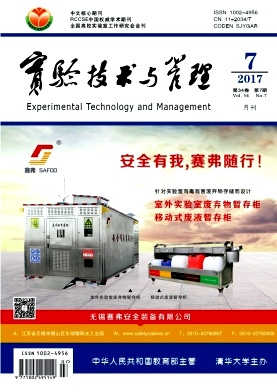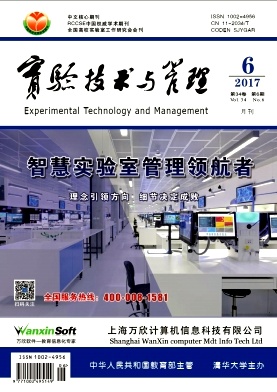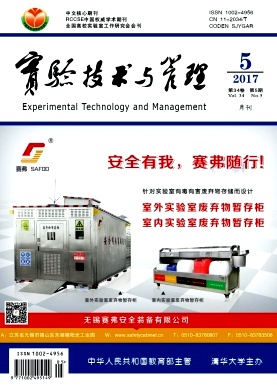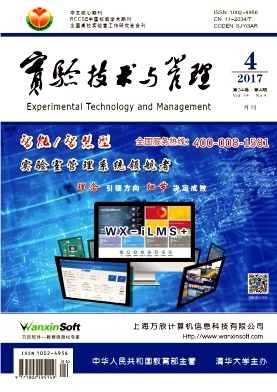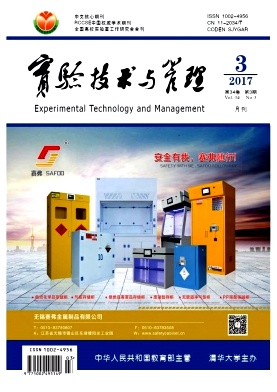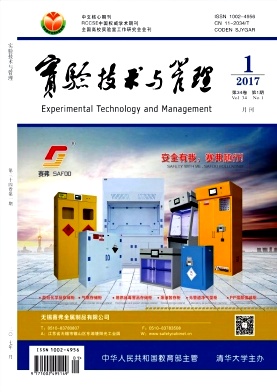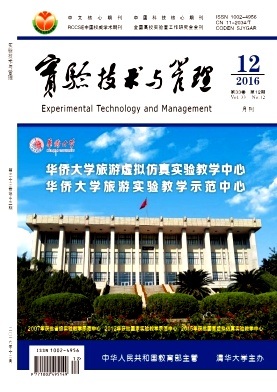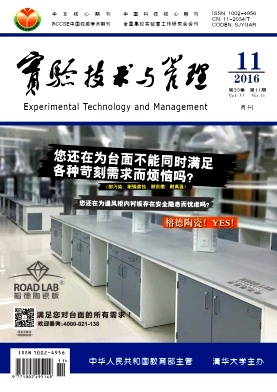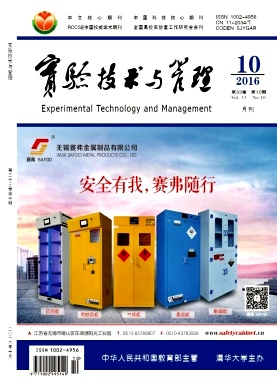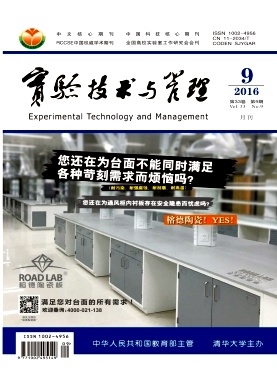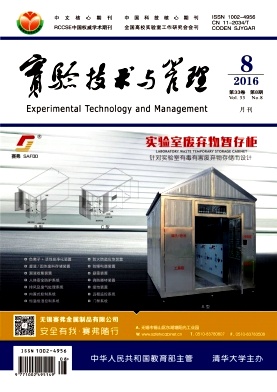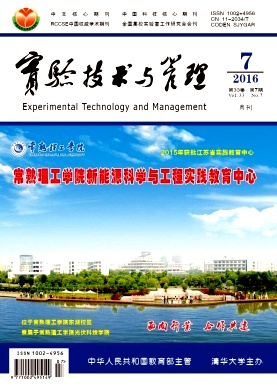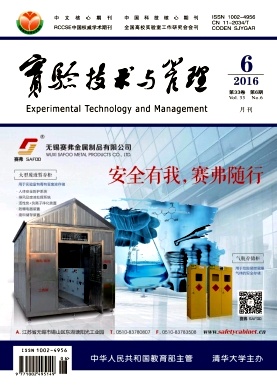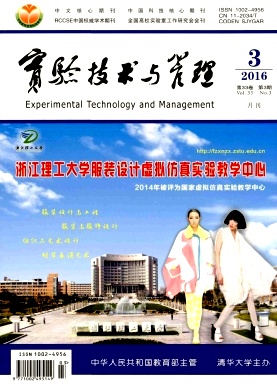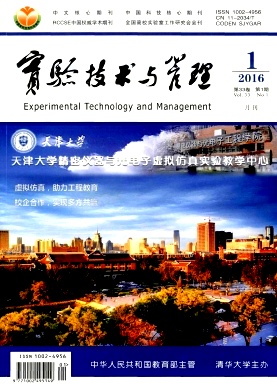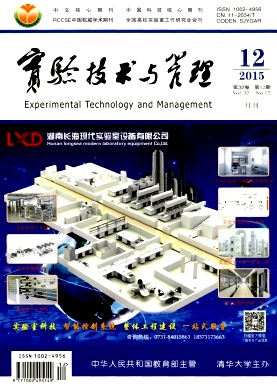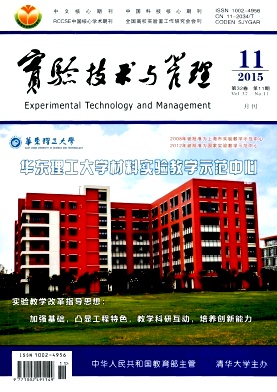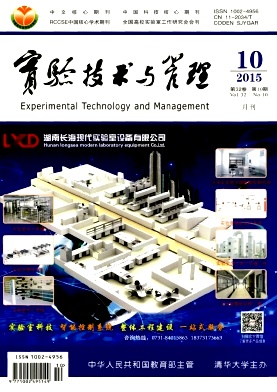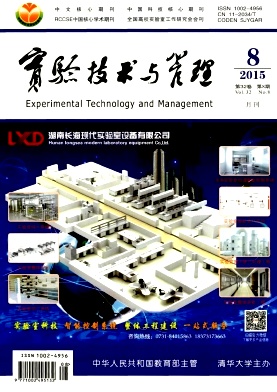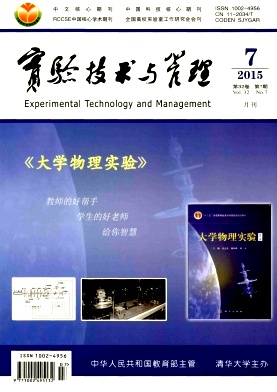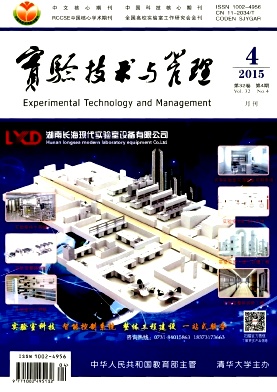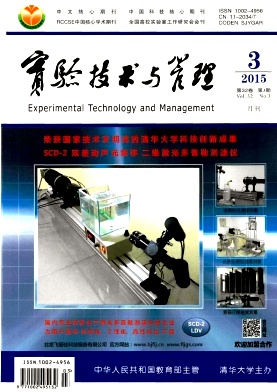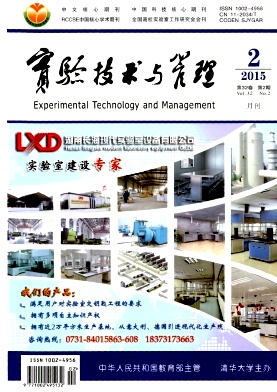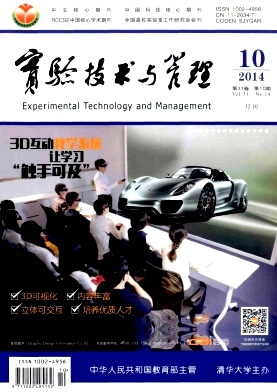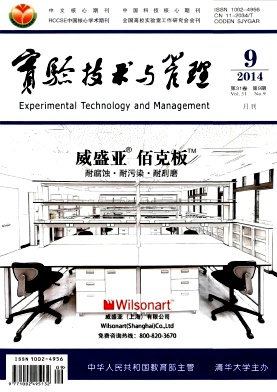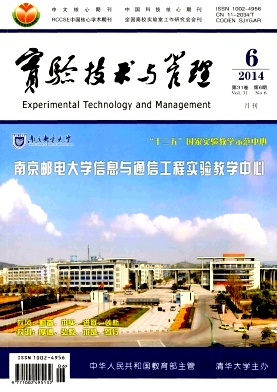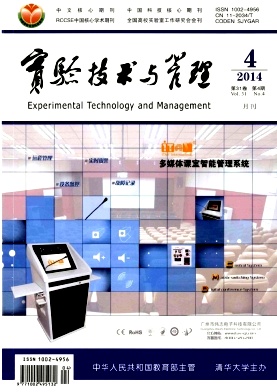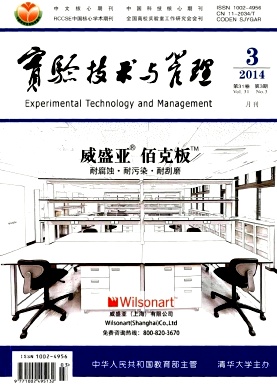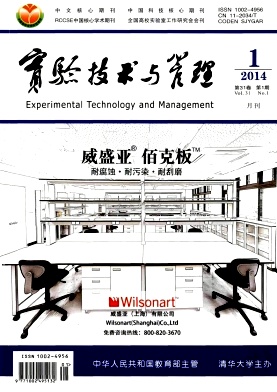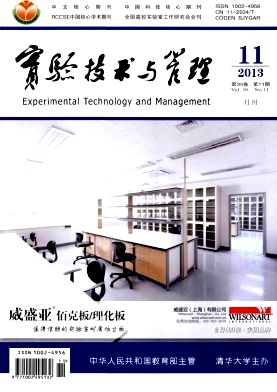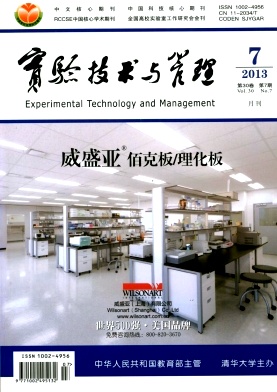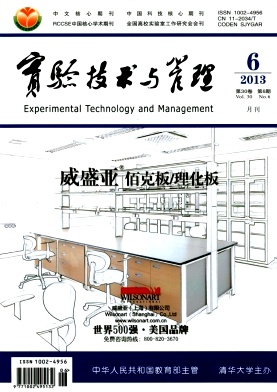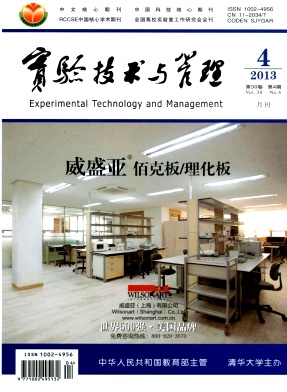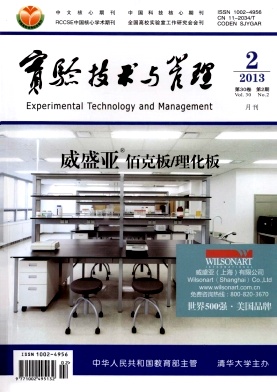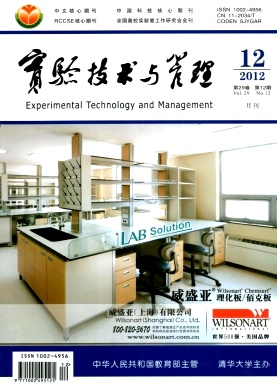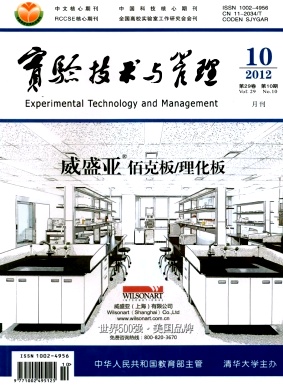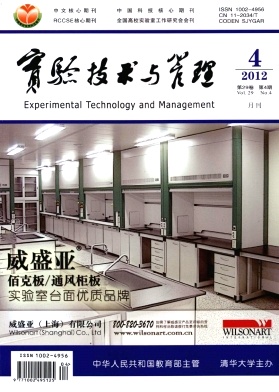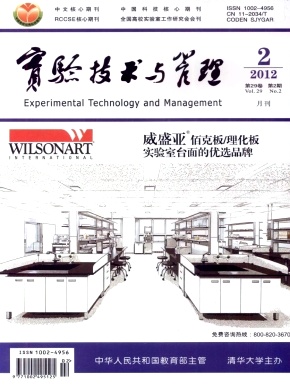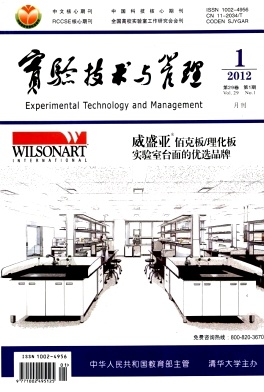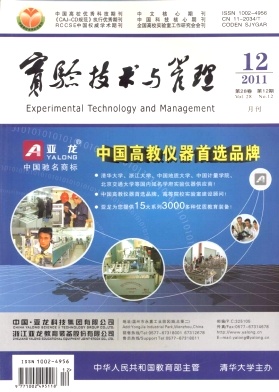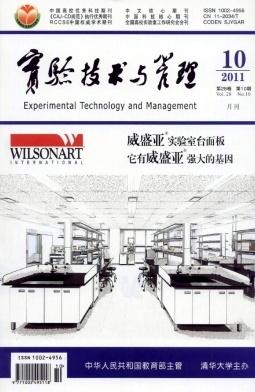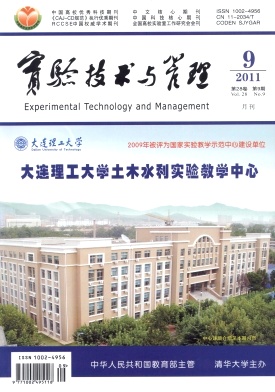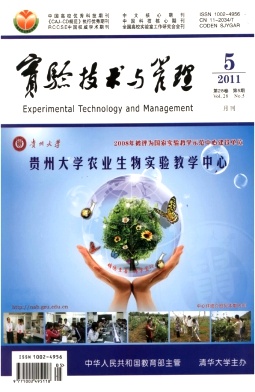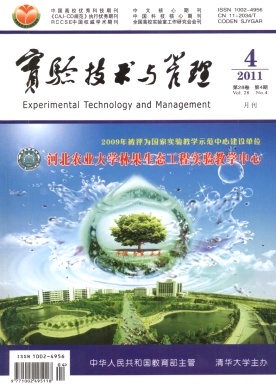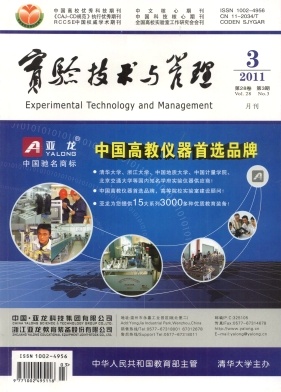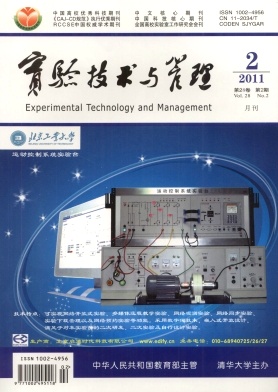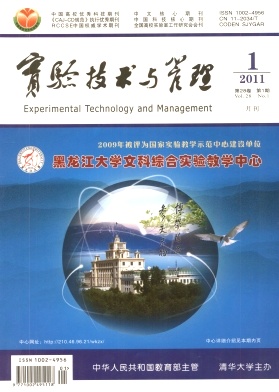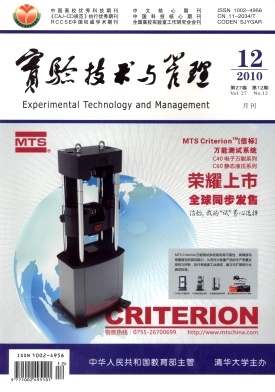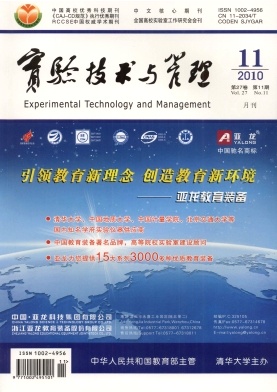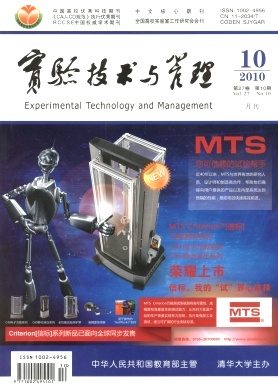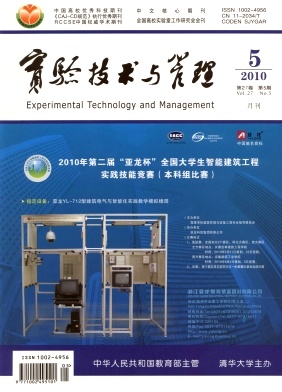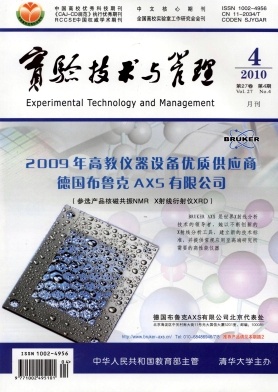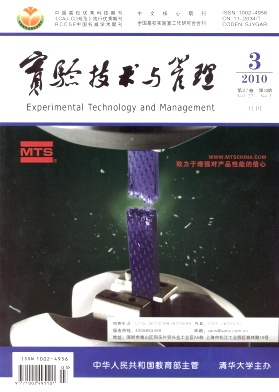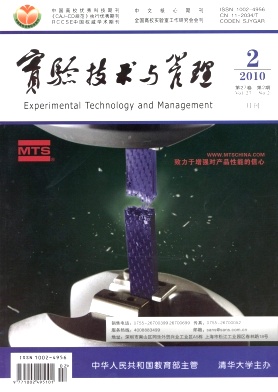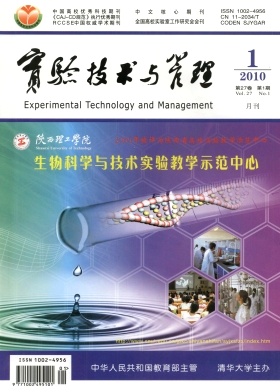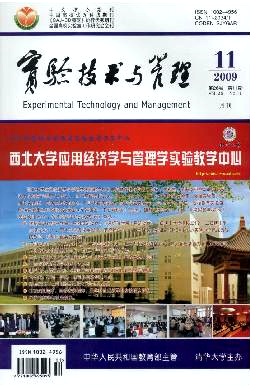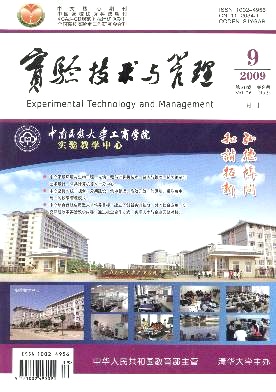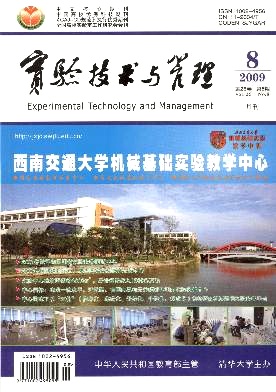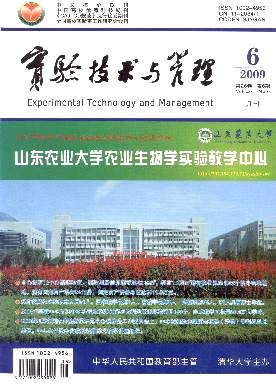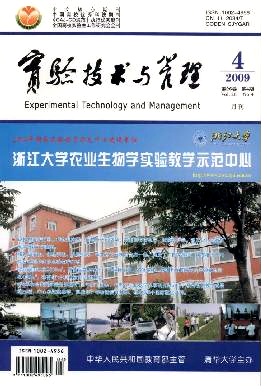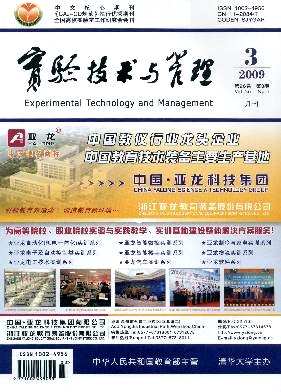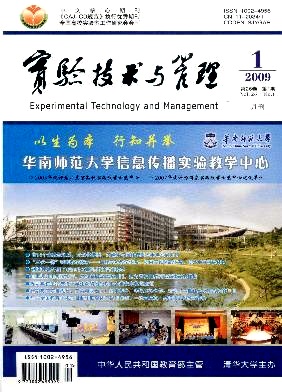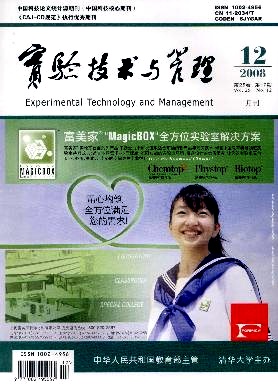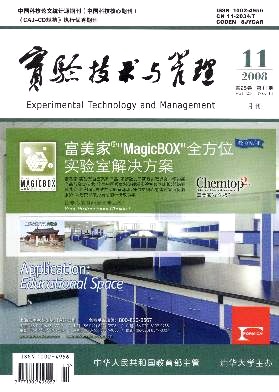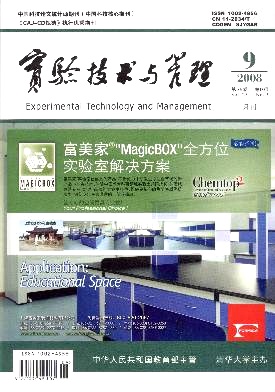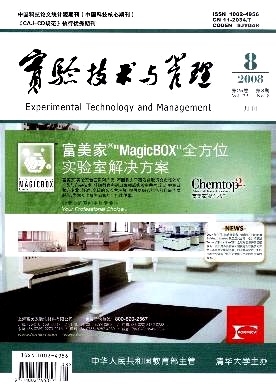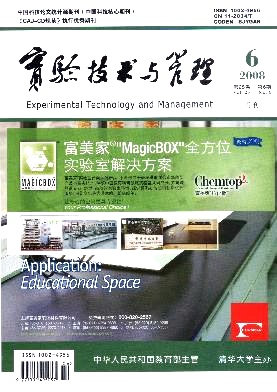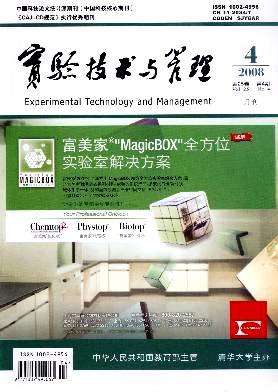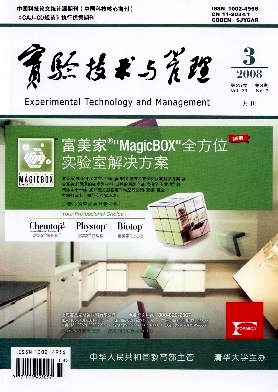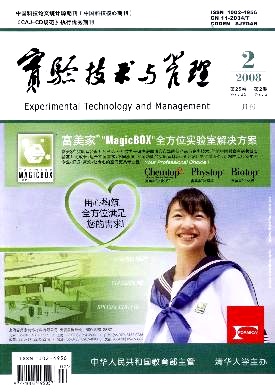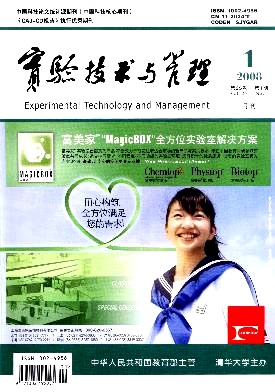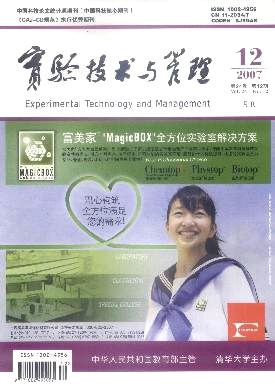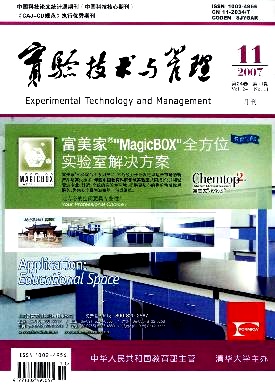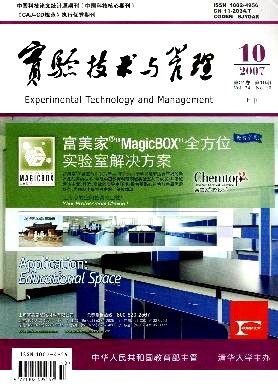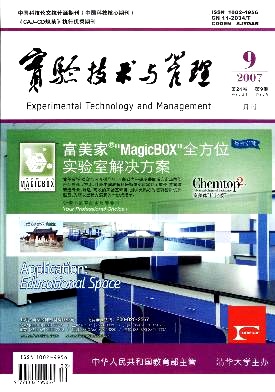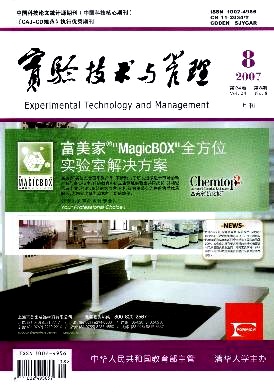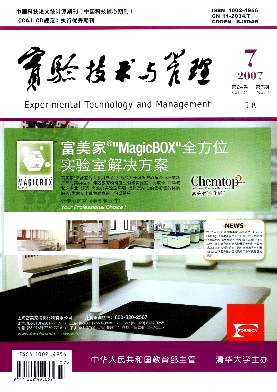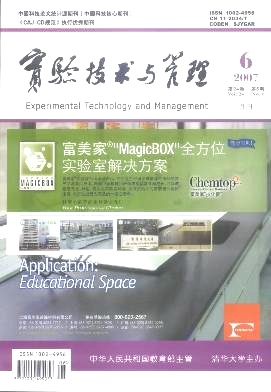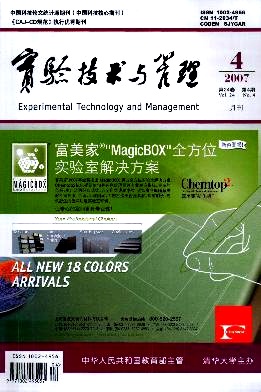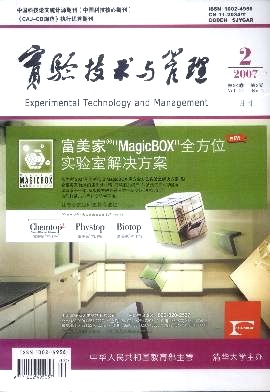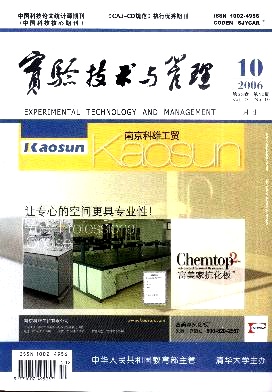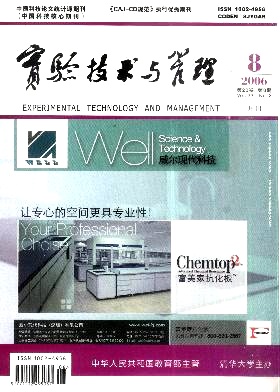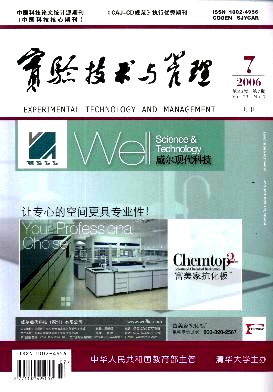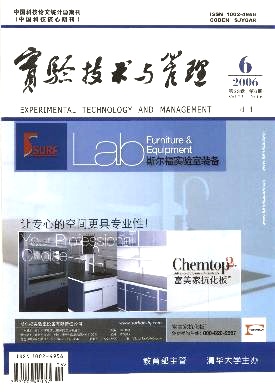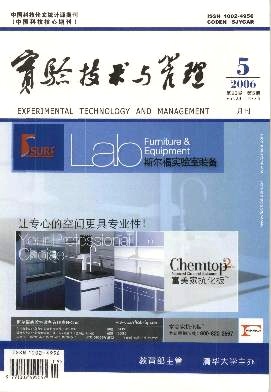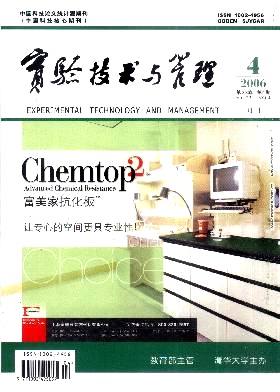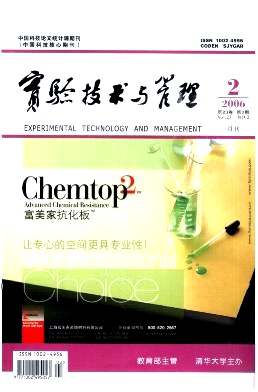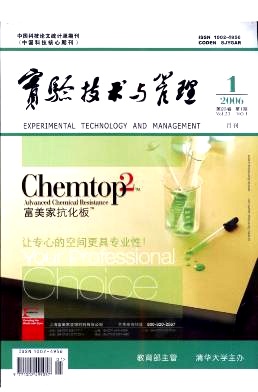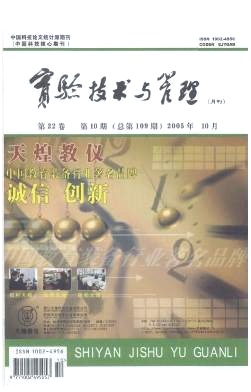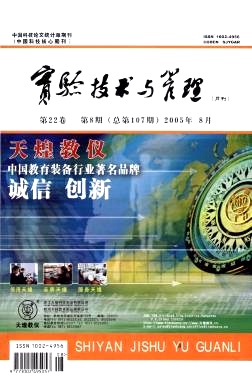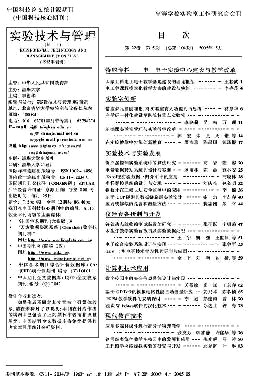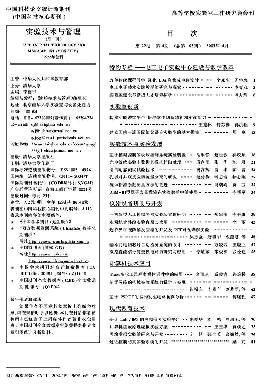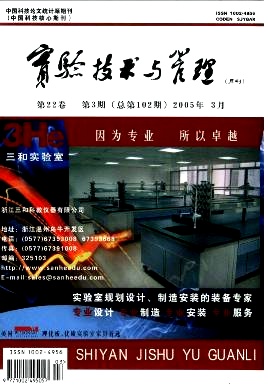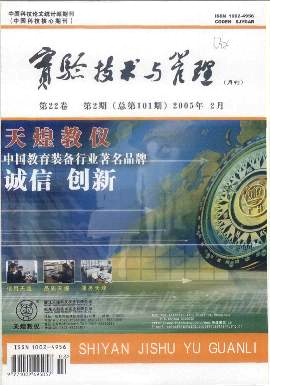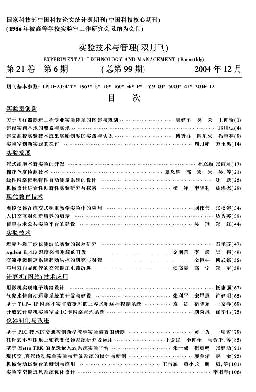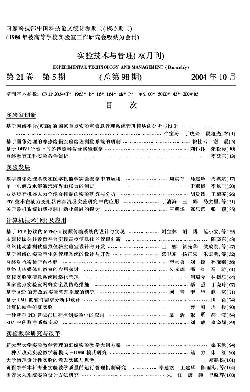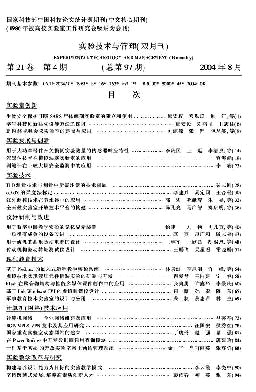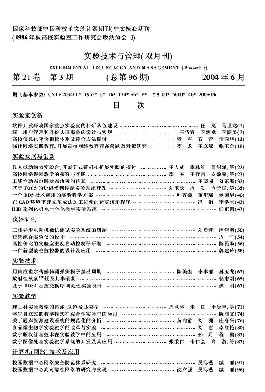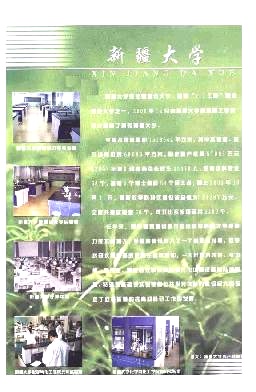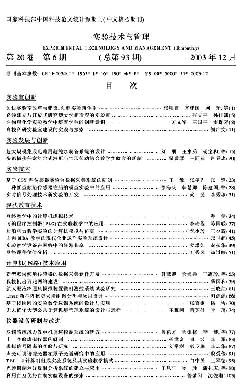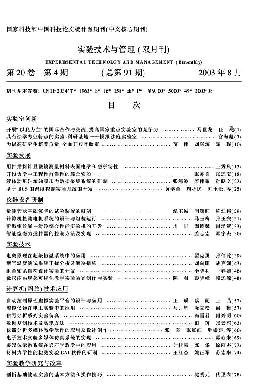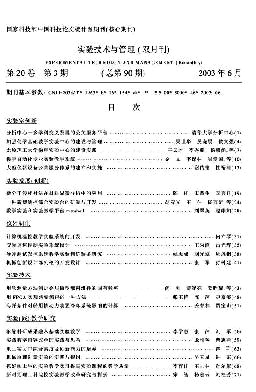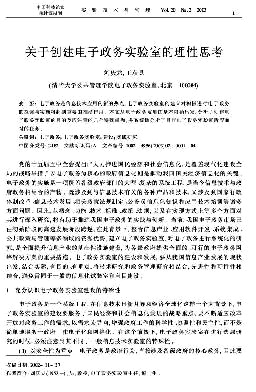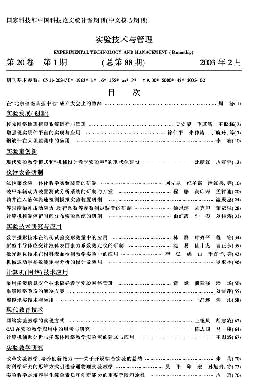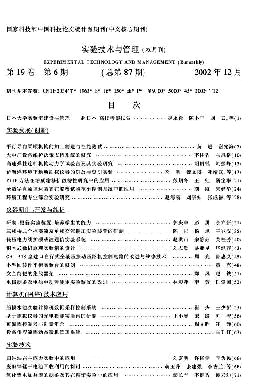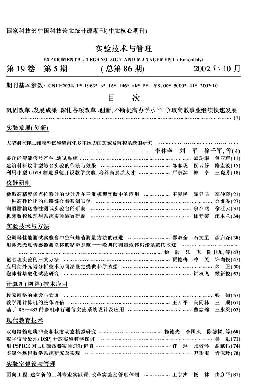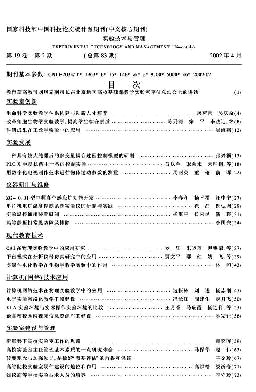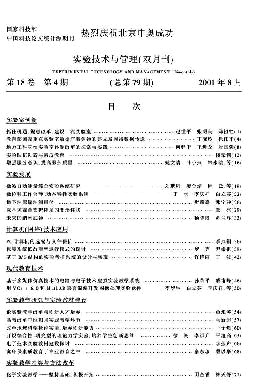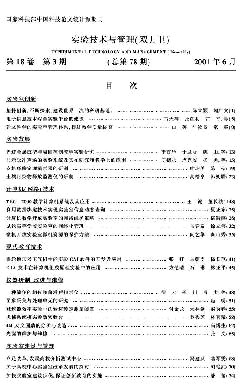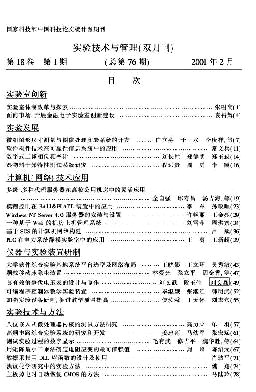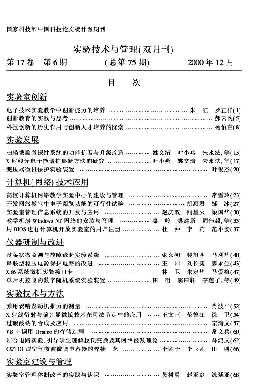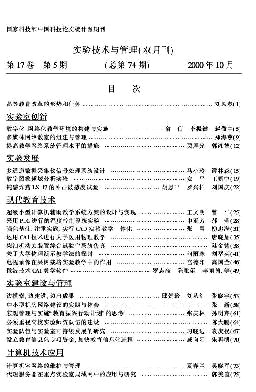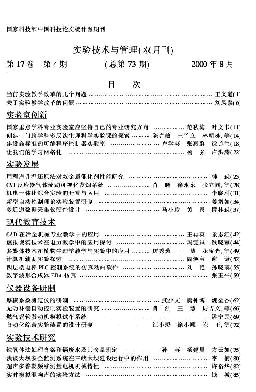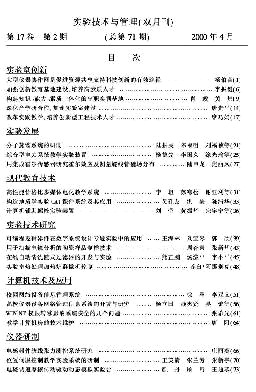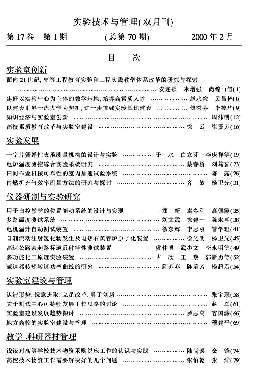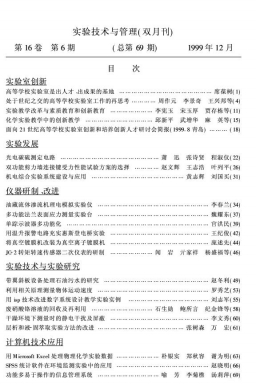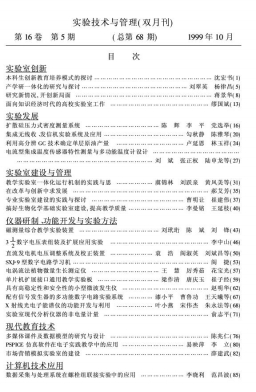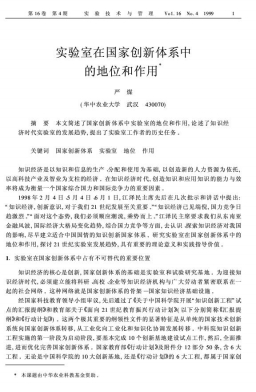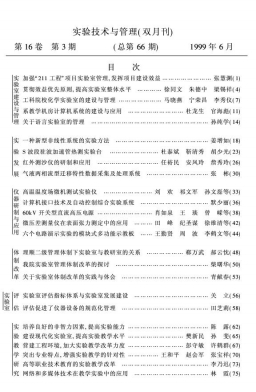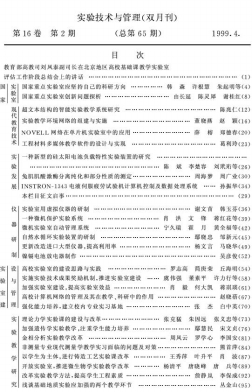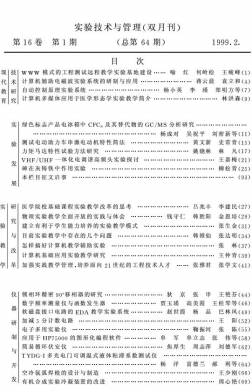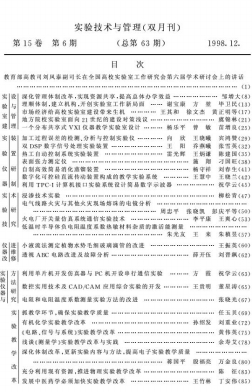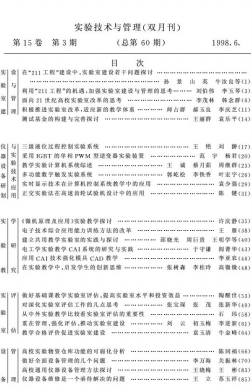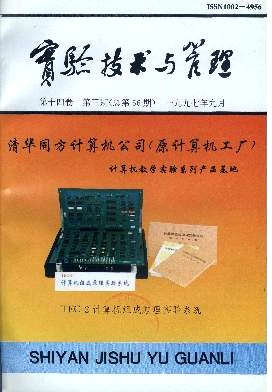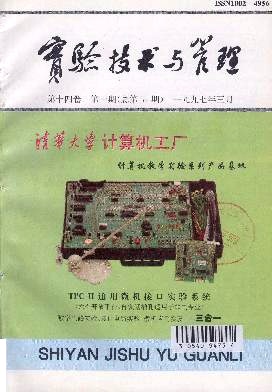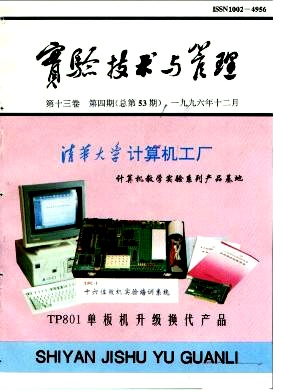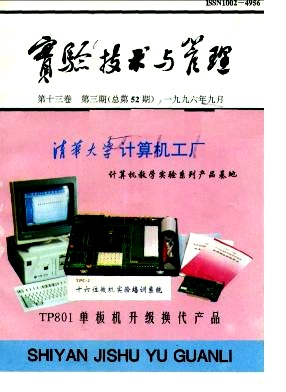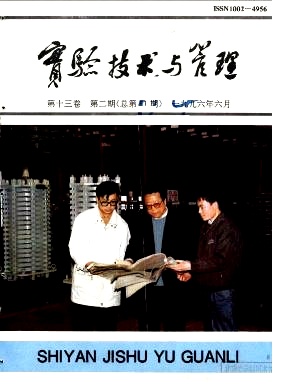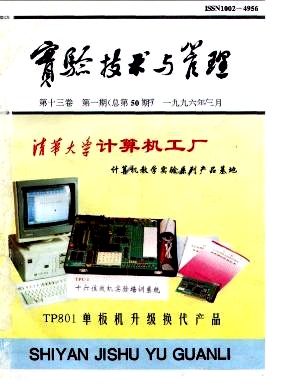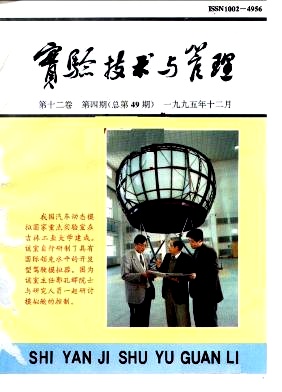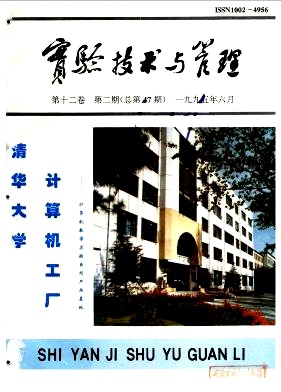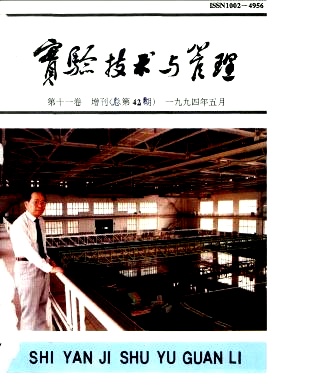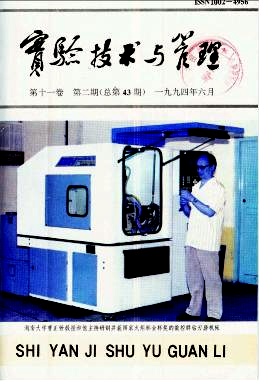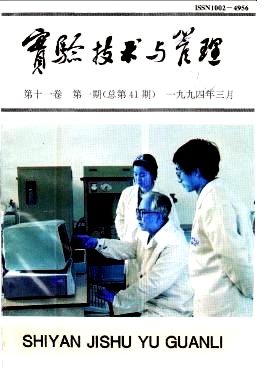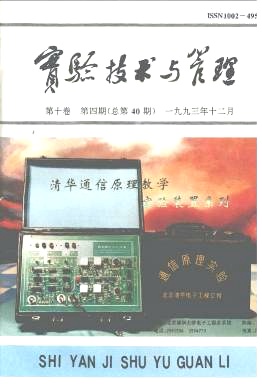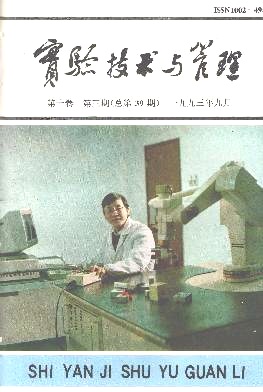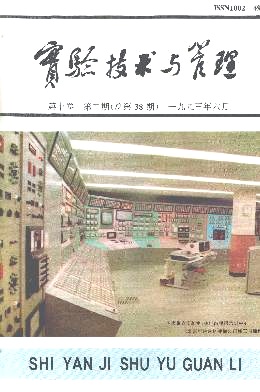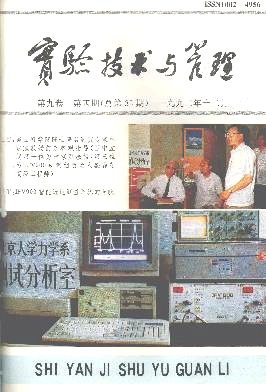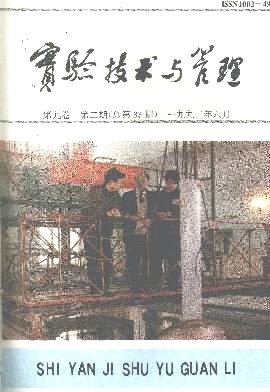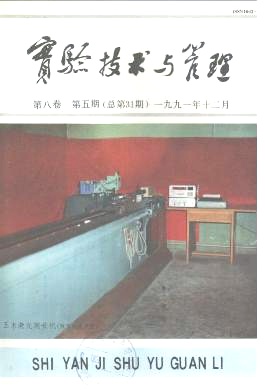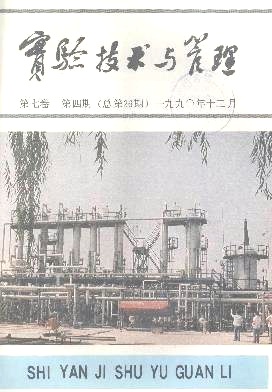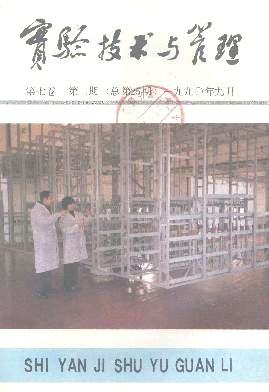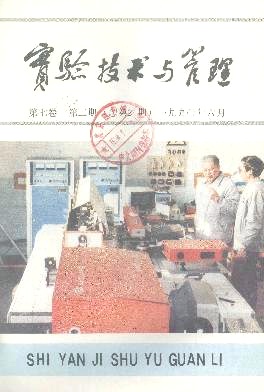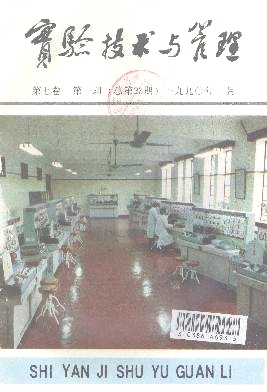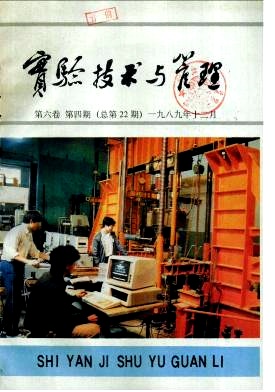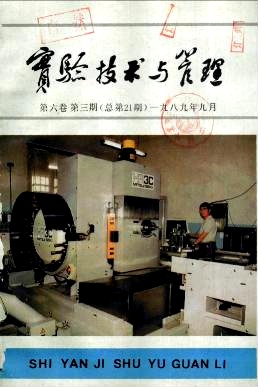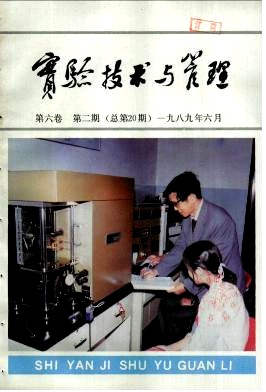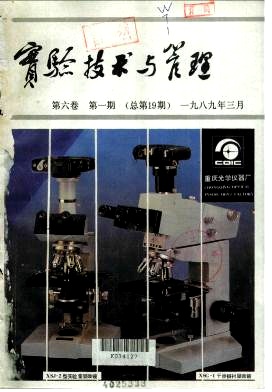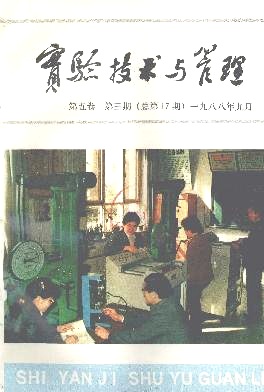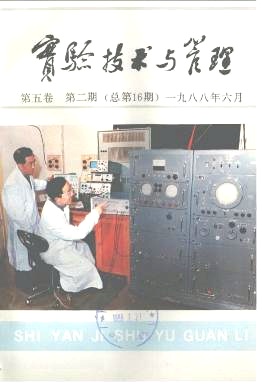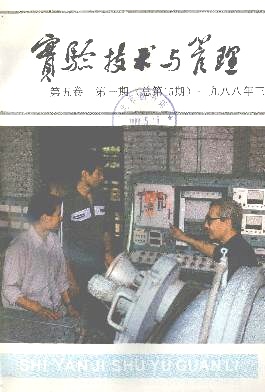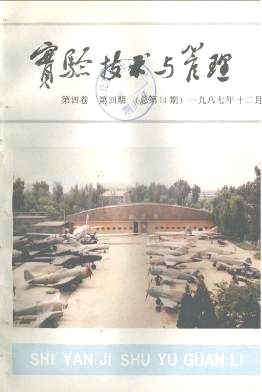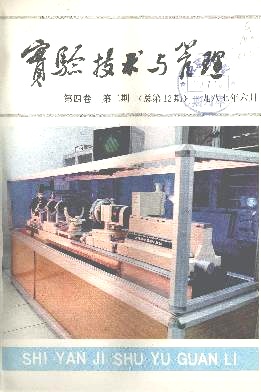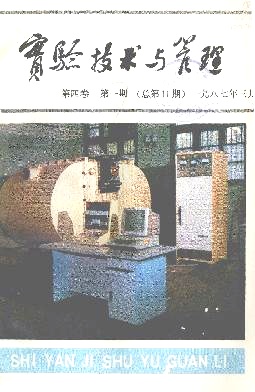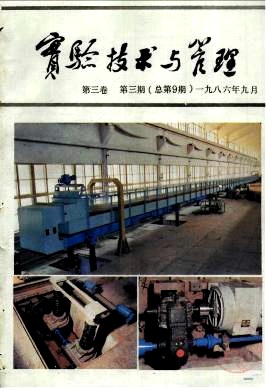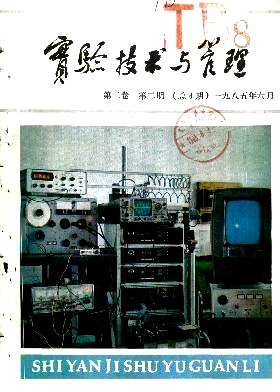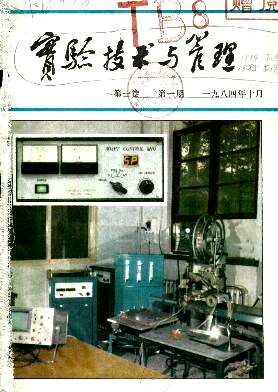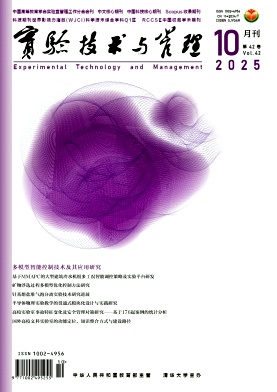
Tracking the information about your manuscript
Communicate with the editorial office
Query manuscript payment status Editor LoginCollecting, editing, reviewing and other affairs offices
Managing manuscripts
Managing author information and external review Expert Information Reviewer LoginOnline Review
Online Communication with the Editorial Department
WeChat Official Account

Page Views
Research on multimodel intelligent control technology and its application
LI Xiaoli;ZHANG Guoju;XIE Xiaoxian;WANG Kang;[Significance] Multimodel intelligent control technology provides an effective solution for managing complex systems. Traditional single-model control methods often struggle to achieve satisfactory performance when dealing with systems charactered by multimodal behaviors, strong nonlinearity, and uncertainty. In contrast, multimodel intelligent control describes different system states or behaviors by constructing a model set composed of multiple models, each representing a specific operating condition or mode. A dedicated controller is designed for each model, forming a corresponding controller set. A switching criterion based on the identification error between each model and the actual plant is designed. When the parameters of the controlled system change, the system switches to the model that best matches the current conditions and activates the corresponding controller. This approach significantly enhances adaptability and robustness, making it well-suited for complex, uncertain, stochastic, and nonlinear systems. Furthermore, with the continuous advancement of artificial intelligence, neural networks, and other emerging technologies, the application scope of multimodel intelligent control is expanding, which promotes the development of multimodel interaction fusion and multichannel applications. [Progress] In the area of model set optimization, various optimization strategies, such as genetic algorithms, particle swarm optimization, and other intelligent algorithms, have been proposed to enhance the accuracy and generalization capability of the model. This paper explores key challenges related to switch timing, target model selection, switching accuracy, and switching speed. Several indicator function designs are introduced to optimize the switch performance between models. With the integration of neural networks, fuzzy logic and other advanced technologies, the strategies underlying multimodel intelligent control have evolved considerably. The basic principle, design method, and stability of multimodel intelligent control have been extensively studied, and a variety of control strategies have emerged, such as neural network–based multimodel adaptive control and fuzzy logic–based multimodel control. From a practical standpoint, multimodel intelligent control has found wide application in industrial automation, intelligent manufacturing, and intelligent healthcare. These applications have demonstrated significant improvements in automation levels, production efficiency, and intelligent system optimization. In healthcare, for example, it has supported the automatic control of medical devices and the intelligent analysis of medical data. [Conclusions and Prospects] Despite its advantages, multimodel intelligent control technology still faces several challenges. These include improving the accuracy and generalization ability of the model, optimizing the algorithm of the switching mechanism for greater efficiency, and integrating the approach with other advanced technologies to broaden its application range. Addressing these challenges requires further in-depth research and development. In the future, the continued advancement of artificial intelligence and machine learning is expected to drive multimodel intelligent control technology toward more intelligent, efficient, and precise control outcomes. Further research is likely to explore new application domains—such as speech, text, image, and video processing—within multimodal and cross-modal contexts.
Multiple operating condition intelligent regulation strategy and experimental platform for chillers of large buildings based on multiple model adaptive predictive control
YANG Xu;GAO Shihang;LI Qing;ZHANG Xiaofei;GAO Jingjing;CUI Jiarui;[Objective] The heating, ventilation, and air conditioning(HVAC) system is a major energy consumer in buildings, with the chiller—the core component of the system—playing a vital role in meeting cooling demands by carrying heat. Therefore, flexible demand-based regulation of the chiller is essential to improve building thermal comfort and reduce energy consumption. As a nonlinear, highly coupled, and dynamic system, the chiller exhibits varying system characteristics under different operating points and environmental conditions. This necessitates a control strategy capable of adapting to diverse operating scenarios. [Methods] To address the challenge of multicondition chiller regulation in HVAC systems, an intelligent regulation method based on multiple model adaptive predictive control(MMAPC) was proposed. To analyze the dynamic characteristics of chiller under different operating conditions, its working mechanism was examined using thermodynamic theory, and a chiller control model suitable for real-time operations was established. Based on the influence of environmental factors, three representative operating conditions were identified and classified. For each condition, an incremental model predictive controller was designed using the mechanism-based model. These controllers were integrated through an adaptive weighted control variable fusion approach to form the overall MMAPC strategy. To evaluate the proposed approach, a real-time experimental platform was developed, comprising an intelligent chiller regulation unit, a supervisory computer with a large display screen, and several underlying control devices. The platform supports flexible communication configuration, high-volume data processing, and the deployment of various intelligent algorithms. Comparative experiments between single MPC control and the proposed MMAPC strategy were conducted on this platform. [Results] Experimental results showed that the proposed MMAPC approach reduced the average tracking error by 70% compared with single MPC control. Additionally, it decreased the average overshoot between different operating conditions by approximately 75% and reduced the average standard deviation of the compressor valve opening by around 91%. These results demonstrated the feasibility and effectiveness of the proposed control strategy in achieving accurate chiller outlet temperature tracking while maintaining HVAC system stability. The developed experimental platform successfully enabled real-time data acquisition, strategy computation, and command issuance, while visually displaying system status on the large screen. [Conclusions] The intelligent experimental platform effectively supports real-time strategy verification and provides a practical foundation for teaching and research. The MMAPC strategy demonstrates excellent performance in multicondition chiller regulation and show strong potential for solving tracking control problems in dynamic, time-varying systems. This method lays the groundwork for deploying chiller operation optimization algorithms and contributes to energy-saving and emission-reduction goals under stable HVAC operation.
Research on a multimodel adaptive optimal control method for the mineral flotation process
WANG Kang;YI Junxuan;LI Xiaoli;[Objective] The mineral flotation process plays a pivotal role in the extraction and purification of nonferrous metal ores such as copper and silver. However, its inherent characteristics—strong nonlinearity, substantial disturbances, and frequent operating condition changes—pose major challenges to traditional control strategies, which often fail to achieve dynamic adaptability and global optimality. This research aims to develop an intelligent control framework capable of maintaining high concentrate grades and system stability under fluctuating production conditions. [Methods] To address process variability and model mismatch, a multimodel adaptive optimal control method based on adaptive dynamic programming(ADP) is proposed. First, a multicondition modeling framework is established using recurrent neural networks(RNNs), with the beluga whale optimization(BWO) algorithm employed to globally optimize RNN learning rates. This BWO-RNN modeling approach significantly enhances the generalization capability and fitting accuracy across different operating scenarios. In the control stage, a parallel ADP tracking controller within an augmented state-space framework is adopted, enabling real-time policy iteration to compute the optimal control law. Furthermore, a cumulative error–based model-switching mechanism is introduced to dynamically select the most suitable submodel and controller in response to changing process conditions, thereby ensuring robust system performance and seamless controller transitions. [Results] The proposed framework was validated using simulation data from a copper–silver flotation plant. Compared to traditional model-based control and(particle swarm optimization) PSO-optimized RNNs, the BWO-RNN model achieved higher fitness values and shorter training times. In control experiments involving transitions among three typical operating conditions, the multimodel ADP controller demonstrated superior tracking accuracy for copper and silver concentrate grades, with lower overshoot and faster response times than baseline controllers. In addition, the model-switching strategy effectively suppressed oscillations and maintained stability even under abrupt changes in operating conditions, demonstrating strong robustness. The overall control cost was reduced by 4.3%, indicating improved reagent efficiency and operational economy. [Conclusions] This study presents a novel adaptive control framework integrating a multimodel structure, BWO-RNN–based data-driven modeling, ADP-based optimal tracking control, and a dynamic model-switching mechanism. The proposed method effectively addresses the nonlinear, time-varying, and disturbance-prone characteristics of the flotation process. Simulation results confirm its capability to achieve stable and accurate concentrate grade tracking across diverse operational scenarios, offering a promising approach for industrial deployment in mineral flotation systems. Future work will focus on extending the framework to real-time online identification and practical field implementation in industrial flotation plants.
Research progress on gas-liquid separation experimental technology for thorium molten salt reactors
MAO Luyun;LU Tiezhong;LI Jiaxu;GUI Nan;YANG Xingtuan;JIANG Shengyao;[Objective] Liquid-fuel thorium molten salt reactors(LF-TMSRs), as a candidate technology for Generation IV advanced nuclear reactors, offer significant advantages such as enhanced safety, non-proliferation, and reduced nuclear waste. However, fission gases generated during operation, such as xenon and krypton, reduce reactor efficiency and stability. To mitigate the accumulation of neutron poisons, techniques such as helium injection, mass transfer, and bubble separation are employed. Consequently, gas-liquid separation has become a critical technology in the operation of LF-TMSRs, with the swirl vane gas-liquid separator serving as a key component in the gas removal system. This study summarizes experimental approaches for evaluating separation performance and investigating separation mechanisms in swirl vane gas-liquid separators, providing guidance for future research. [Methods] Gas-liquid separation experiments in TMSRs can be divided into separation characteristic experiments and flow field characteristic experiments. This paper reviews recent studies in both categories, summarizes the features of experimental systems and techniques, and provides suggestions for future research. Separation characteristic experiments focus on evaluating parameters such as separation efficiency and critical back pressure to assess separator performance and determine optimal operating conditions. The experimental setup typically includes subsystems for bubble/liquid supply, flow and pressure regulation, parameter measurement, and liquid circulation. Flow field characteristic experiments utilize visualization systems to analyze two-phase dynamics, including air core morphology, bubble trajectory and morphology, and liquid phase velocity fields, using advanced technologies such as high-speed imaging and particle image velocimetry. [Results] The different forms of the gas phase, such as the air core and bubbles, serve as visual indicators of separation performance. Ideally, a stable, rod-like gas core forms within the separator, and the bubbles concentrate along the central axis before discharge. However, factors such as back pressure, Reynolds number, and swirl number can cause deviations in air core morphology. Additionally, the bubble axial separation length, measured from initial injection to final coalescence into the air core, reflects the difficulty of separation. Shorter separation lengths usually correspond to higher separation efficiency, indicating satisfactory design or operating conditions. To further understand the microscopic separation mechanism, studies have examined swirl flow velocity distribution and bubble morphological evolution. Quasi-Rankine vortices dominate the flow structure, with swirl intensity initially increasing and then decreasing. As bubbles approach the central axis of the separator, their shapes flatten and eventually form asymmetric cap or cashew-like morphologies due to centrifugal and pressure gradient forces induced by the swirl flow. [Conclusions] Given the complexity of the flow dynamics within the separator, extensive experimental studies have evaluated separator performance and investigated underlying mechanisms. Future research should focus on extending experiments to hot-state conditions, collaboratively optimizing guide vane parameters, and developing a unified theoretical model to describe the complex bubble interactions, thereby advancing the understanding of gas-liquid separation mechanisms in LF-TMSRs.
Optimization design method for the morphology of assembly contact interfaces and its pedagogical application
LIN Qiyin;CHEN Lifei;QIU Mingjun;WANG Chen;LI Xianyang;HONG Jun;[Objective] With the intensifying global technological revolution and industrial transformation, the assembly and connection performance of complex and precision equipment has become a strategic factor in safeguarding national core competitiveness. This performance largely depends on the contact state of the assembly interface, which serves as a crucial medium for load transmission between components. The uniformity of contact pressure distribution and the effective contact area directly affect the reliability and service life of the system. Traditional methods for improving contact performance exhibit considerable limitations in engineering practice. Studies have shown that the geometric morphology of the assembly interface greatly influences contact behavior. However, existing optimization methods often suffer from low computational efficiency, poor convergence stability, and limited applicability in educational settings. Therefore, there is an urgent need for an efficient, robust morphological optimization method for assembly interfaces, along with a practical teaching system, to support both high-end equipment performance and the development of innovative engineering talent. [Methods] Based on point-to-point contact theory and finite element discretization, this study proposes an optimized morphological design method for assembly interfaces. In this method, discretized contact nodes are treated as design variables, and the stress distribution characteristics across the interface serve as the objective function. The procedure begins by discretizing the interface into contact nodes. Contact stress at each node is then extracted through simulation analysis, and positional adjustments for each node are computed based on extreme stress values. By modifying node coordinates, the interface morphology is regulated, ultimately achieving a more uniform stress distribution. An experimental teaching scheme based on this method is also proposed, and its implementation process is elaborated. To validate both the method and its educational application, a case study was conducted using the stop bolt connection interface in a high-pressure aeroengine rotor. [Results] The experimental teaching plan was carried out systematically. Results showed:(1) the variance of contact pressure decreased from 314.27 MPa2 to 18.73 MPa2, a reduction of 94.04%;(2) the effective contact area increased from 286.65 mm2 to 778.85 mm2, an increase of 171.71%;(3) before optimization, pressure-sensitive paper displayed a roughly circular pattern with a 6.4 mm inner diameter and an 11.7 mm outer diameter;(4) after optimization, the developed color range expanded to a 6.4 mm inner diameter and 17.1 mm outer diameter;(5) a verification experiment confirmed the effectiveness of the proposed optimization method. [Conclusions] The proposed morphological optimization method, based on point-to-point contact theory, significantly enhances contact performance by dynamically adjusting node coordinates. It provides an effective solution to the problem of connection reliability in complex equipment. The accompanying teaching scheme integrates research into education, promoting problem-based learning that enhances students' innovation and engineering abilities. This method is also applicable to precision assembly scenarios such as aerospace sealing structures and turbine blade hubs, providing technical support for high-end equipment performance improvement while establishing a replicable model for innovation-driven engineering education.
Microwave Over-the-Horizon High-Speed Communication Technology for Offshore Facilities in the South China Sea
WANG Jipeng;YI Jianbo;JIN Yunzhi;ZHENG Yangboyin;SU Ting;[Objective] Offshore assets in the South China Sea—oil and gas platforms, offshore wind farms, maritime supervision nodes, and emergency response bases—are moving toward deep-water, far-offshore, and long-duty operations that demand backhaul links with simultaneously high throughput, low latency, and high availability. Conventional line-of-sight microwave is range-limited and GEO satellite suffers from high latency. To address these constraints, this study develops and validates a practical over-the-horizon (OTH) microwave communication solution that exploits evaporation ducts in the marine atmospheric boundary layer. The objectives are threefold: (i) establish a predict-then-deploy workflow that couples a parabolic-equation (PE) propagation model with environmental data and engineering constraints; (ii) quantify capacity-stability co-design via polarization multiplexing and link aggregation on the capacity side and spatial diversity on the stability side; and (iii) verify engineering applicability against long-range field measurements on representative South China Sea links. [Methods] We build a PE-based maritime radio channel model that ingests refractivity profiles of the marine boundary layer, rough-sea impedance boundary conditions, and coastal/terrain information to predict transmission loss along candidate paths. The modeling adheres to a forward-propagating, narrow-angle PE with split-step FFT marching, using antenna patterns as initial conditions and an absorbing layer aloft to suppress spurious reflections. The same readout convention as engineering link budgeting is enforced: transmission loss is referenced to free-space at 1 m and sampled at the transmitter/receiver heights. On the system side, we architect a “microwave-primary, scatter/satellite-assisted”hierarchy for offshore production networks. Capacity enhancement uses dual-polarization multiplexing and physical-layer link aggregation; stability enhancement uses spatial diversity with combined reception to mitigate sea-surface multipath, evaporation-duct variability, and platform motion. We instrumented a typical land-to-platform link (135.3 km; land site altitude ≈420 m) for one month, logging adaptive modulation/coding states, received signal level (RSL), transmit power, bandwidth occupancy, and antenna-combining modes. End-to-end UDP tests (iperf) validate whether configured capacity materializes at the service layer. [Results] The PE model reproduces long-range evaporation-duct propagation with engineering accuracy. On the 135.3 km link, the measured maximum path loss is 209.89 dB, while the PE-predicted maximum is 208.59 dB; the absolute difference is 1.30 dB under synchronized environmental forcing and a unified readout, confirming predictability and applicability for planning and operations. Long-term statistics show that combined-reception (spatial diversity) is the prevailing mode for most periods rather than a rare fallback, which raises link availability and preserves the decision margin required for higher-order adaptive modulation. Time-occupancy analysis indicates that high-order modes (16/32/64QAM) dominate, while low-order modes (QPSK/4/8QAM) appear only in short windows during adverse channel episodes. Consistent with these distributions, daily RSL ranges remain high for most days with occasional troughs attributable to boundary-layer changes, sea-surface multipath, or weather transitions. The system’s capacity envelope exhibits a stable lower bound (≈26.355 Mbps under conservative ACM settings) and a single-link peak near 184.079 Mbps at 64QAM. With three links aggregated and 1:1 split between uplink and downlink, the configured aggregate capacity reaches ≈1.1 Gbps, which is borne out at the service layer: end-to-end UDP throughput attains ~557 Mbps uplink and ~551 Mbps downlink (total ~1.108 Gbps) under 40 MHz channels, 64QAM, and combined-reception as the normal operating mode. These results verify that the “capacity via polarization/aggregation + stability via spatial diversity” co-design achieves both high spectral efficiency and high availability on long OTH paths in realistic sea states. [Conclusions] By integrating a PE-based, environment-coupled propagation model with an engineering architecture that jointly optimizes capacity and stability, we close the loop from propagation predictability to operational usefulness for South China Sea OTH microwave. The modeling-measurement agreement (≤1.3 dB on maximum path loss at 135.3 km) provides a reliable basis for scenario-specific planning and parameter selection. In continuous operation, spatial-diversity combining emerges as the default mode, materially improving availability and sustaining higher-order modulation over long periods, while polarization multiplexing and link aggregation deliver near-linear capacity scaling up to the tested ~1.1 Gbps aggregate. The proposed workflow and parameter baselines are reproducible for deep-water, far-offshore facilities that need low-latency, high-availability backhaul, and they offer a transferable template for deployment and evolution of microwave-centric offshore networks in evaporation-duct-prone maritime environments.
[Downloads: 0 ] [Citations: 0 ] [Reads: 0 ] HTML PDF Cite this article
Exploration and practice of the “Research Class” model for undergraduates using key laboratories: TOP program of Beihang University
WANG Jiani;LIU Gang;JIN Tian;[Objective] Given the increasingly urgent demand for high-level innovative talents in China, the requirement for universities to strengthen the cultivation of these talents has become more explicit. To further strengthen interdisciplinary collaboration in science and education in universities, Beihang University has launched the Research Class program, building on its key laboratories. This program aims to quickly integrate recent scientific research laboratory achievements into teaching content, spark students’ interest in professional learning, enhance research guidance, and promote access to national and provincial key laboratories for undergraduate students. By fostering in-depth participation in scientific research practice, it aims to improve students’ practical innovation skills and support their early engagement with research projects, early access to laboratories, and early participation in research teams. [Methods] With “Research Tutors, Open Day, and Mini Projects” as the core—in which research tutors offer guidance, open days enable students to explore laboratory resources, and mini projects promote hands-on research—the curriculum mechanisms of the Research Class promote policy formulation through research in several areas. These include establishing a collaborative organizational mechanism for unifying efforts across departments, standardizing the curriculum design to align with academic goals, adopting flexible methods of course selection that consider student schedules, selecting cutting-edge research topics to keep content updated, strengthening quality supervision to ensure consistent teaching standards, formulating scientific assessment criteria, and enhancing incentives to boost participation. By adopting models such as “Pilot Implementation First, Then Promotion,” the Research Class has been gradually disseminated to all undergraduate students in the university, thus ultimately forming a distinctive new paradigm for talent cultivation through scientific research. [Results] Research Class for undergraduate students has become a crucial tool that Beihang University employs to deepen its reform of experimental teaching and construct a cultivation system for innovative talents. Its innovative features lie in using scientific research to inform teaching, breaking down disciplinary barriers, cultivating innovative thinking, and strengthening personalized cultivation paths. The Research Class has been operating regularly for three years; since then, remarkable achievements have been made: a total of 590 courses have been offered, while 100% of key laboratories at or above the provincial and ministerial levels have been opened to undergraduate students, covering sophomores and juniors. Meanwhile, the university’s key laboratories have been transformed into major teaching spaces for talent cultivation—ensuring that all high-end talents in laboratories contribute to instruction and promoting the transformation of 83% of scientific research achievements into teaching resources. In this manner, talent cultivation through scientific research is effectively maximized. [Conclusions] After several years of practice, relying on multidimensional and systematic reforms, including strengthening organizational collaboration, standardizing the curriculum system, integrating high-quality resources, and innovating operational mechanisms, the Research Class at Beihang University has effectively bridged the gap between scientific research and teaching. It has promoted the full opening of key laboratories to undergraduate students and realized the comprehensive transformation of scientific research resources into talent cultivation resources, thus achieving efficient empowerment. This initiative has yielded remarkable results across areas such as students’ participation in innovation and entrepreneurship competitions and the cultivation of their research capabilities, thereby offering a replicable and successful model for the integration of science and education in universities.
[Downloads: 104 ] [Citations: 0 ] [Reads: 0 ] HTML PDF Cite this article
Analysis of the “traffic lights” of ideological and political education based on integrating cultivation and retention: Taking doctoral students from state key laboratories as an example
REN Yifei;[Objective] In 2024, following national requirements, state key laboratories have been restructured successively and completely. The reorganization of national key laboratories has reshaped their power, responsibility, and benefit structures. Expansion of autonomy in talent policies at state key laboratories has highlighted the urgent need to align talent cultivation and retention with ideological education. From the perspective of the actual needs of the integration of talent cultivation and retention, based on the changes of “power, responsibility and benefits” after the restructuring of state key laboratories, this paper discusses the “traffic light thinking” mode and realization path of the ideological and political education of doctoral students in state key laboratories. The purpose is to propose and systematize a traffic light thinking model to guide the development of a cohesive ideological education framework, ensuring that state key laboratories cultivate high-caliber personnel who contribute sustainably to national strategic goals. [Methods] The research mainly employed a literature analysis method, observation method, and case analysis method. The literature analysis was used to analyze the “red light,” how laws, documents, and regulations prohibit some academic behaviors that cross the bottom line, and which documents should be sent to doctoral students. In addition, it was used to summarize the national key laboratories’ restructuring policy documents of provincial and municipal colleges and universities. The observation method was mainly used to research the “yellow light,” finding that when doctoral students are onboarded as university lecturers, they face pressures and challenges, combining the benefits that can be provided by state key laboratories, and analyzing the countermeasures that can enhance doctoral students’ academic confidence through ideological and political education. The case analysis method was mainly used to analyze the “green light,” which explored the practical path of traffic light thinking. [Results] The study employs traffic light thinking, which is a flexible structuration model and framework for ideological education to doctoral students of state key laboratories in specific contexts. By analyzing traffic light thinking, this paper integrates content, theory, and practice, systematically constructs the ideological and political education system of state key laboratories, and lays the foundation for the integration of training and retention of skilled laboratory scientific research personnel. First of all, according to the national key laboratories’ restructuring policy documents, the study analyzes changes in power, responsibility, and benefits in talent policy after state key laboratories’ restructuring. Second, it proposes and explains the connotations of traffic light thinking, which are represented by bottom-line education (red lights), academic confidence (yellow lights), and integrity education (green lights). Lastly, this study proposes three measures to ensure the smooth implementation of traffic light thinking, which integrates doctoral students’ ideological and political education into teaching, daily behavioral norms, and the process of learning new technologies. [Conclusions] The traffic light thinking model offers a systematic approach to ideological and political education in state key laboratories, effectively bridging the gap between talent cultivation and employment of younger university lecturers. By integrating conceptual clarity with actionable pathways, it lays a foundation for constructing a comprehensive ideological–political education system that supports long-term talent stability and national strategic objectives.
[Downloads: 100 ] [Citations: 0 ] [Reads: 0 ] HTML PDF Cite this article
Exploring the transformation motivations, dilemmas, and innovation paths of engineering training centers in universities under the construction of emerging engineering education
HU Dexin;LI Ziqing;[Objective] Engineering training centers are practice-based education bases with Chinese characteristics established within higher education institutions to cultivate students’ practical engineering skills. Within the context of China’s national strategies for manufacturing revitalization and innovation-driven development, these centers are undergoing a profound paradigm shift. Having traditionally focused on foundational skills training, they are now increasingly recognized as key platforms for cultivating students’ integrated innovation capabilities and engineering competencies, in alignment with the goals of the emerging engineering education. Based on case studies of ten engineering training centers in China, this study analyzes the motivations, current limitations, and future innovation paths shaping their transformation. An in-depth analysis of their development status is conducive to providing valuable references for the high-quality upgrading of these centers in Chinese higher education institutions. [Methods] Guided by educational ecology theory, this study examines the ecosystem of engineering training centers, with particular emphasis on four dimensions in their interaction with the external environment: institutional, resource, pedagogical, and organizational synergies. Following a research trajectory of “identifying transformation motivations through real-world needs, analyzing transformational constraints through case studies, and proposing transformation pathways through stakeholder practices,” the study constructs an analytical framework of “motivations–constraints–pathways.” In accordance with the principle of theoretical sampling, ten representative university engineering training centers were selected for analysis to identify the core drivers of transformation and upgrading, the practical challenges encountered, and feasible innovation pathways for future development. [Results] The transformation of engineering training centers in China is primarily driven by the core engine of building a manufacturing powerhouse and advancing innovation-driven development, the ripple effects generated by technological revitalization of traditional industries, and the intrinsic motivation of cultivating innovative and outstanding engineering talent. However, engineering training centers face multiple challenges in their transformation and upgrading: (1) insufficient policy support and underdeveloped institutional systems; (2) weak implementation of organizational coordination mechanisms for interdisciplinary collaboration, industry–education integration, and international cooperation; (3) inadequate information technology infrastructure and constraints on developing a dual-qualified teaching team; (4) persistence of traditional practical teaching models in philosophy, content, and methodology. A comparative analysis across cases further reveals varying levels of transformation maturity, with some centers demonstrating more advanced integration of digital technologies and industry collaboration. [Conclusions] The findings suggest that the successful transformation of engineering training centers requires a holistic approach addressing multiple ecosystem elements. To address these practical challenges, the study proposes actionable innovation pathways for China’s engineering training centers, focusing on top-level design, faculty development, and cultural ecology. By strengthening policy guidance, increasing teacher capacity, and fostering an innovative culture, these centers can better align with the goals of emerging engineering education and cultivate high-quality engineering talent. In particular, engineering training centers must enhance top-level planning and improve institutional guarantees for high-quality development; strengthen the supply of high-quality technological resources, with increased investment in building a team of practicum-oriented instructors; and reshape the learning culture within the center, leveraging the role of the community to lead innovation-driven development. This study enriches the domestic discourse on engineering education reform by presenting empirical evidence from China and proposing an ecosystem perspective to explain the transformation of practical training institutions. The specific pathways identified provide insights for higher education institutions that are navigating similar challenges in adapting their engineering education to the innovation-driven era.
[Downloads: 101 ] [Citations: 0 ] [Reads: 0 ] HTML PDF Cite this article
Semantic analysis and modeling of accident causes in small-sample university laboratory data
LIU Chunxiang;WU Xinyue;HUANG Ping;YU Longxing;FAN Chuangang;[Objective] Traditional approaches for accident causation analysis are inherently limited by subjectivity and inefficiency. The analysis of individual incidents often lacks generalizability, making it difficult to identify common risk factors across multiple cases. Conversely, aggregating and analyzing multiple accidents collectively is time-consuming and labor-intensive and remains susceptible to high levels of subjective interpretation. To address these limitations, this article proposes a novel framework for accident causation analysis that integrates domain-specific knowledge with advanced text analysis techniques. Specifically designed to overcome the challenges posed by small-sample data typical of university laboratory accidents, the proposed method enables automated identification, semantic interpretation, and classification of contributing factors, thereby enhancing the objectivity, efficiency, and scalability of accident causation analysis. [Methods] This study utilized a dataset comprising 73 university laboratory accident reports collected in 2000–2024. The data were sourced from academic platforms, professional safety websites, and mainstream media outlets. To ensure data reliability and consistency, the texts underwent rigorous cross-validation and screening procedures, and incomplete or unverifiable records were excluded from further analysis. The proposed methodology consists of the following key stages. First, the Deepseek-reasoner model was employed to perform structured processing of the accident case narratives, enabling the precise extraction of critical information such as the sequence of events and causal factors. Subsequently, the term frequency–inverse document frequency (TF–IDF) algorithm was applied to the structured texts to quantify term significance, facilitating the identification and extraction of 30 key accident causation factors. To address the challenge of semantic sparsity inherent in small-sample textual data, a domain-specific corpus was constructed by integrating the 73 accident reports with relevant provisions from university laboratory safety regulations. The FastText model was then trained on this enriched corpus. By leveraging the subword architecture, FastText captures rich semantic representations and internal word structures, enhancing the model’s ability to generate meaningful vector embeddings of the causation factors within the specific domain context. Finally, the vectorized causation factors were subjected to cluster analysis using the K-means algorithm. The resulting clusters were validated through systematic comparisons with the conventional 4M framework (Man, Machine, Material, and Method), ensuring interpretability and alignment with established safety classification paradigms. This integrated approach enhances the objectivity and analytical depth of accident causation analysis, particularly in data-scarce environments. [Results] This study successfully achieved the automated identification, semantic understanding, and classification of accident causation factors in the context of small-sample data. Specifically, the TF–IDF algorithm effectively identified 30 key causation factors from the limited dataset, demonstrating its utility in extracting salient features from sparse textual records. To address semantic sparsity in small-sample text, FastText was trained on a domain-specific corpus enriched with knowledge of laboratory safety to capture nuanced semantic relationships and contextual similarities among causation factors, enhancing vector representations. Consequently, the model accurately reflected high-level semantic coherence and structural associations within the data. Subsequent cluster analysis using the K-means algorithm yielded an optimal partitioning into four clusters. Notably, these clusters exhibited strong alignment with the classical 4M framework, confirming the interpretability and theoretical consistency of the results. This congruence validates the feasibility and effectiveness of the proposed method in accurately uncovering meaningful patterns in accident causation, even under data-constrained conditions. [Conclusions] The proposed novel method, which integrates domain-specific knowledge with advanced text analysis techniques, effectively addresses the core challenges of semantic sparsity and limited domain adaptability in analyzing small-sample university laboratory accident data. By enabling automated identification, semantic interpretation, and classification of accident causation factors, the approach significantly enhances the efficiency and accuracy of accident analysis. Thus, this research offers a robust technical framework for improving laboratory safety management. Owing to its adaptability and high performance under data-scarce conditions, the method shows strong potential for broader applications in other domains involving limited textual datasets and domain-specific knowledge integration.
[Downloads: 105 ] [Citations: 0 ] [Reads: 0 ] HTML PDF Cite this article
Study on the design and analysis methods of orthogonal experiment
Liu Ruijiang,Zhang Yewang,Wen Chongwei,Tang Jian(School of Pharmaceutics,Jiangsu University,Zhenjiang 212013,China)The importance of orthogonal experimental design and analysis is introduced briefly.The principle and characteristic are expounded.The design methods of orthogonal experiment and analysis methods of orthogonal experimental results are analyzed in detail,which afford fully systemic methods for orthogonal experimental design and analysis.Problems in orthogonal experimental design and analysis and development of software for orthogonal experimental design and analysis are also pointed out in the end.
[Downloads: 52,870 ] [Citations: 3,083 ] [Reads: 356 ] HTML PDF Cite this article
Research on statistical analyses and countermeasures of 100 laboratory accidents
Li Zhihong;Training Department,Kunming Fire Command School;This paper summarizes 100typical cases of laboratory accidents from 2001and analyzes the cases in fields of accident type,accident link,accident cause,dangerous substance category,etc.The result shows as follows:the fire disasters and explosive accidents are the main types of laboratory accidents;the dangerous chemicals,instruments and equipment,and pressure vessels are main dangerous substances;the instruments and equipment and reagent application processes are the main links of accidents;the violation of rules,improper operation,carelessness,wire short circuit and aging are the main reasons of accidents.It also puts forward the countermeasures and suggestions for the prevention and control of laboratory accidents in the following aspects:establishing complete safety management system,actively promoting standard construction of laboratory safety,strengthening laboratory safety education and training,and formulating and improving emergency plans for laboratory accidents.
[Downloads: 9,140 ] [Citations: 492 ] [Reads: 52 ] HTML PDF Cite this article
Constructing practice teaching system focusing on ability training
Zhang Zhongfu(Zengcheng College,South China Normal University,Guangzhou 511363,China)The economic and social development has given rise to an increasing demand for applied talents,and people have attached more and more importance to practice teaching.The practice teaching system should focus on ability training,build practice teaching system,adjust the practice teaching contents,reform practicing teaching pattern,coordinate practicing teaching administrating system,and constructing a scientific and reasonable quality ensuring system and a practicing teaching evaluation system.
[Downloads: 4,161 ] [Citations: 253 ] [Reads: 384 ] HTML PDF Cite this article
The application of studying fluorescence spectroscopy on protein
Yin Yanxia,Xiang Benqiong,Tong Li(College of Life Science,Beijing Normal University,Beijing 100875,China)Fluorescence spectroscopy is very important for studying protein structure and conformation changes.The concept and principle of fluorescence spectroscopy are introduced at first,then the application of studying fluorescence spectroscopy on protein is explained.
[Downloads: 5,113 ] [Citations: 252 ] [Reads: 376 ] HTML PDF Cite this article
The CNC machine tool with systematic work process and its application of teaching design
Li Yanxian(Department of Mechanical and Electronic Engineering,Nanjing Communications Institute of Technology,Nanjing 211188,China)According to professional training objectives and the main jobs of the structure of vocational skills and knowledge required to "CNC machine tools and spare parts" for the carrier,taking the CNC programming and operation of capacity-building as the center,this paper shows the design of the "knowledge of CNC machine tools,observation and analysis of CNC lathes,CNC milling machine to observe and analyze the processing center,programming and processing stepped shaft,threaded shaft of the programming and processing,hand wheel slot programming and processing,convex programming and processing of the template,the base of the programming and processing"of 9 items,25 learning environment,67 tasks,and one of the "convex template programming and processing" learning environment for the teaching unit design.
[Downloads: 382,855 ] [Citations: 6 ] [Reads: 52 ] HTML PDF Cite this article
Study on the design and analysis methods of orthogonal experiment
Liu Ruijiang,Zhang Yewang,Wen Chongwei,Tang Jian(School of Pharmaceutics,Jiangsu University,Zhenjiang 212013,China)The importance of orthogonal experimental design and analysis is introduced briefly.The principle and characteristic are expounded.The design methods of orthogonal experiment and analysis methods of orthogonal experimental results are analyzed in detail,which afford fully systemic methods for orthogonal experimental design and analysis.Problems in orthogonal experimental design and analysis and development of software for orthogonal experimental design and analysis are also pointed out in the end.
[Downloads: 52,870 ] [Citations: 3,083 ] [Reads: 356 ] HTML PDF Cite this article
Construction and actualization of new experimental teaching system for chemical specialty
YANG Jin-tian(Institute of Life Science,Huzhou Normal College,Huzhou 313000,China)The new system of chemical experiment teaching is constructed,and the comprehensive experiments,open experiments and research-oriented experiments are set up to improve the degree of source sharing,the efficiency of using equipment and the quality of experimental teaching,hence efficiently optimizing the practical abilities and fostering innovative spirit for the undergraduates are achieved.
[Downloads: 24,228 ] [Citations: 11 ] [Reads: 363 ] HTML PDF Cite this article
Practice and thinking of education of“College Students' Innovative and Entrepreneurial Training Program”based on tutor system
Qian Xiaoming;Rong Huawei;Qian Jingzhu;Office of Academic Affairs,Nanjing University of Technology;The innovation and entrepreneurship education has been included in the teaching and education program of college schools."College Students' Innovative and Entrepreneurship Training Program "has become an"Excellent Program"as one of the most important reform tasks in Ministry of Education.The tutor system is an effective way of innovative education and pilot training for both college schools and students.Students learn the method of innovation researches and technique of entrepreneurial process through the program.In the meanwhile,teachers in college schools find a new stage to improve their teaching ability.This article focuses on the project,practice and feasibility of the"College Students' Innovative and Entrepreneurial Training Program "under the tutor system.
[Downloads: 10,004 ] [Citations: 219 ] [Reads: 376 ] HTML PDF Cite this article
Experimental research on protein immunoblot assay
ZHANG Yan-wan,YE Jue,SHI Na,MENG Xian-min,WANG Lai-yuan(Central Laboratory,Fuwai Hospital for Cardiology,Chinese Academy of Medical Sciences,Beijing 100037,China)The paper discribes the important significance of protein immunoblot assay(Western blotting) in the research on protein,the experiment principle and the methods of protein immunoblot assay.A few main aspects of experiment technology methods are analyzed and discussed,and the research experience of protein immunoblot assay is also discribed.
[Downloads: 9,231 ] [Citations: 105 ] [Reads: 390 ] HTML PDF Cite this article
